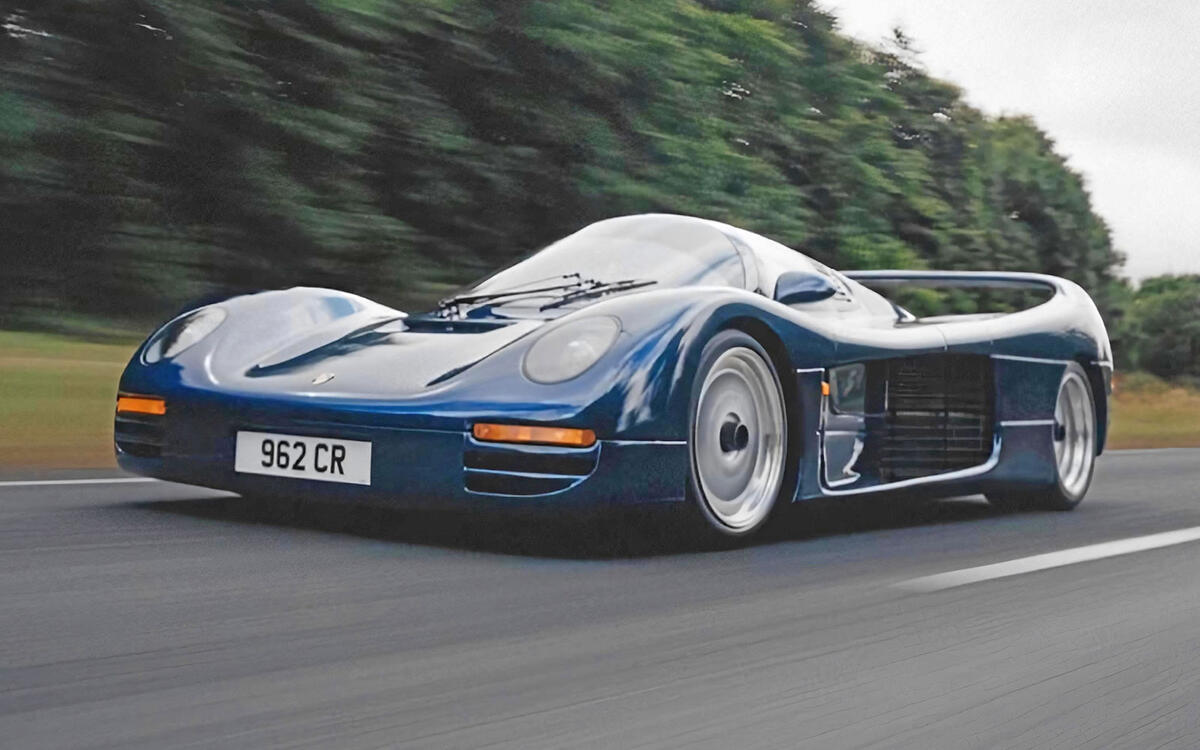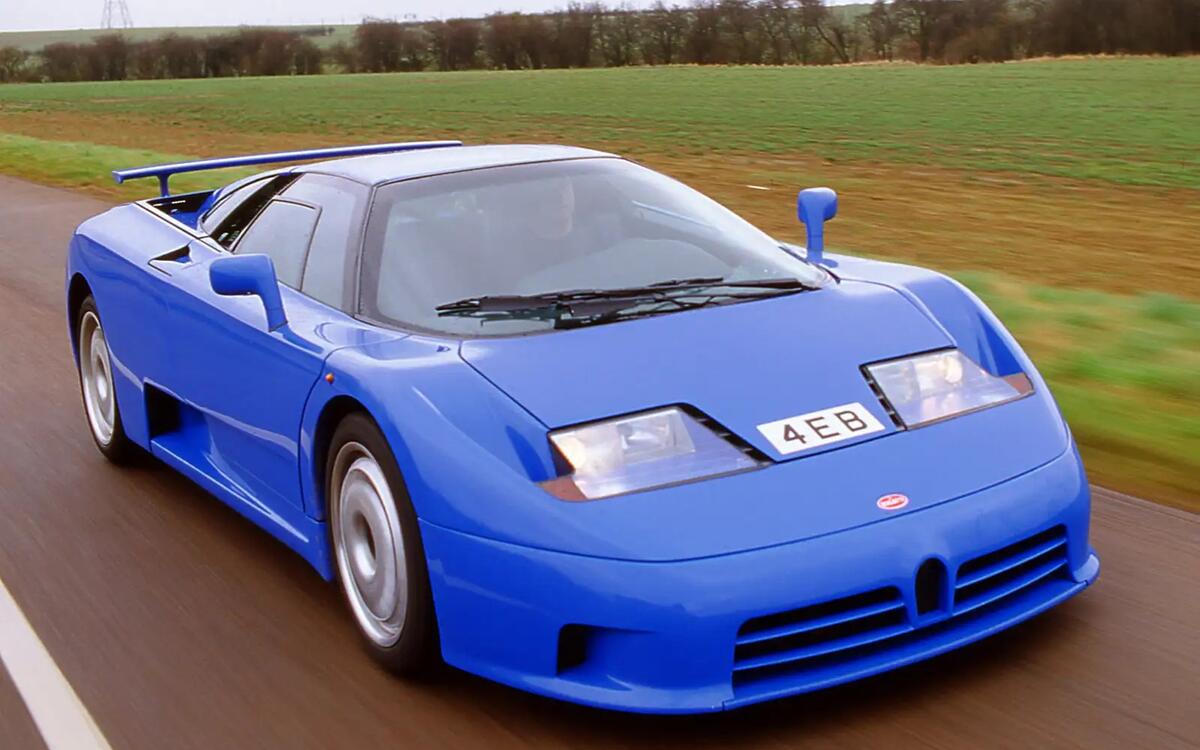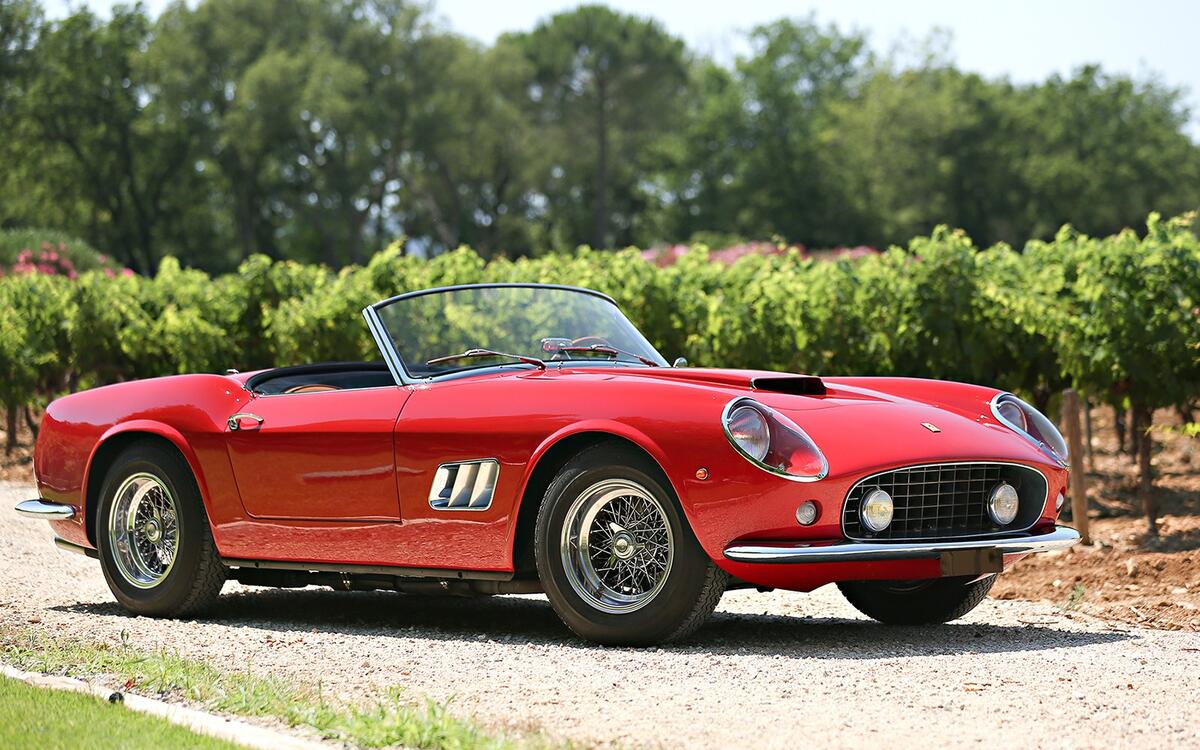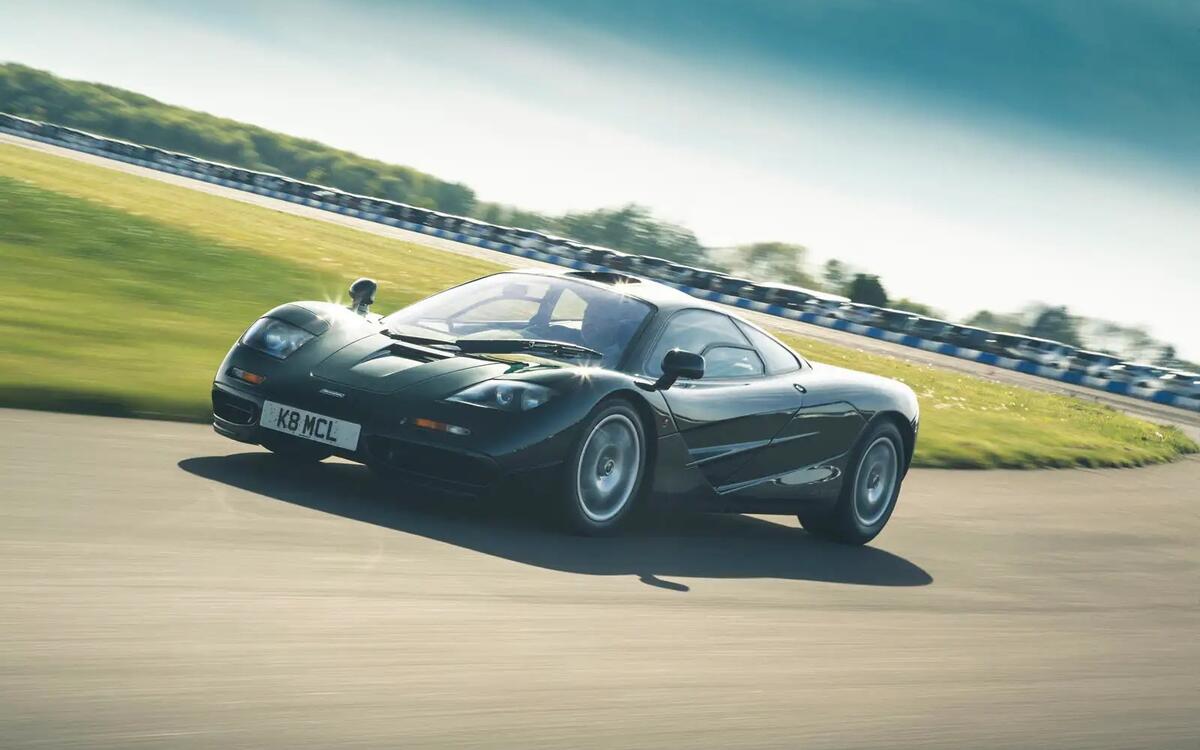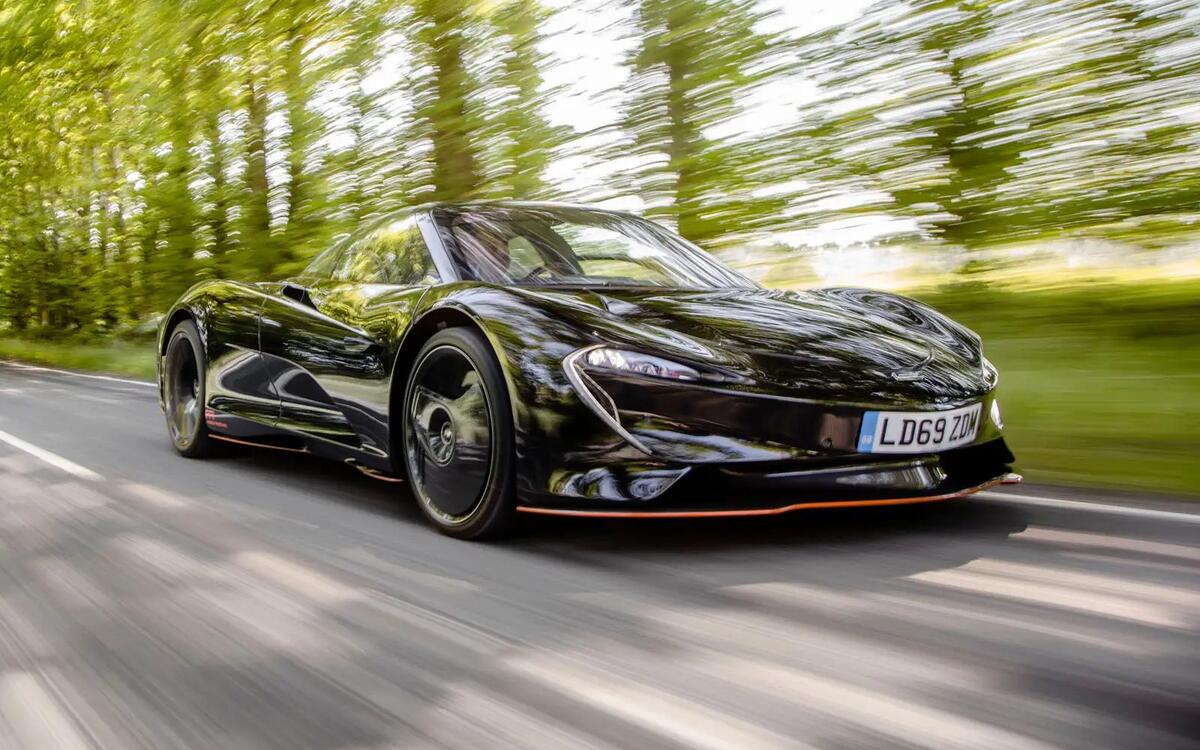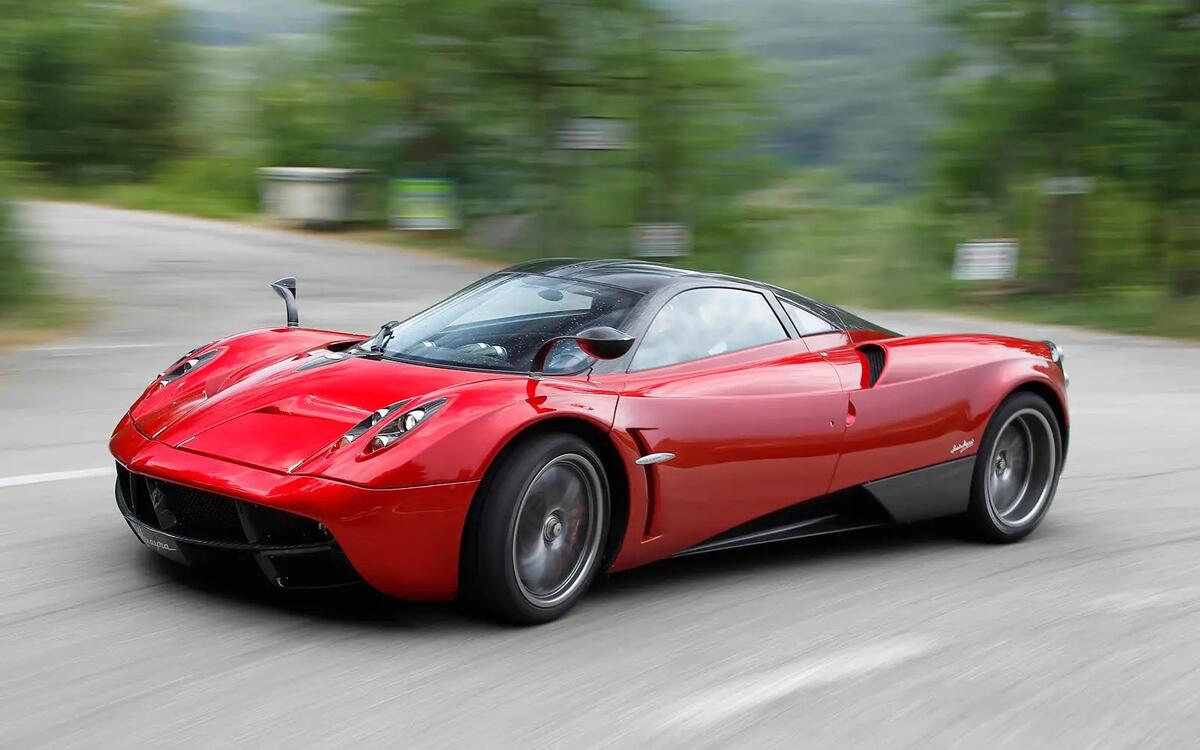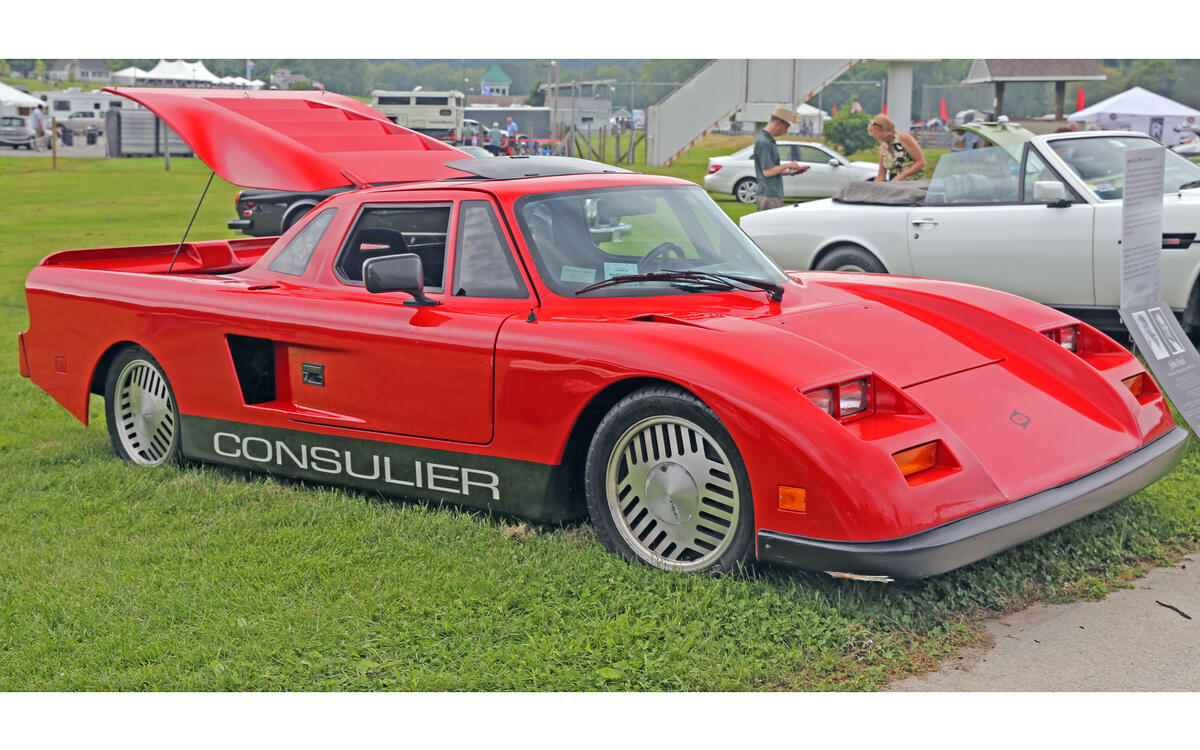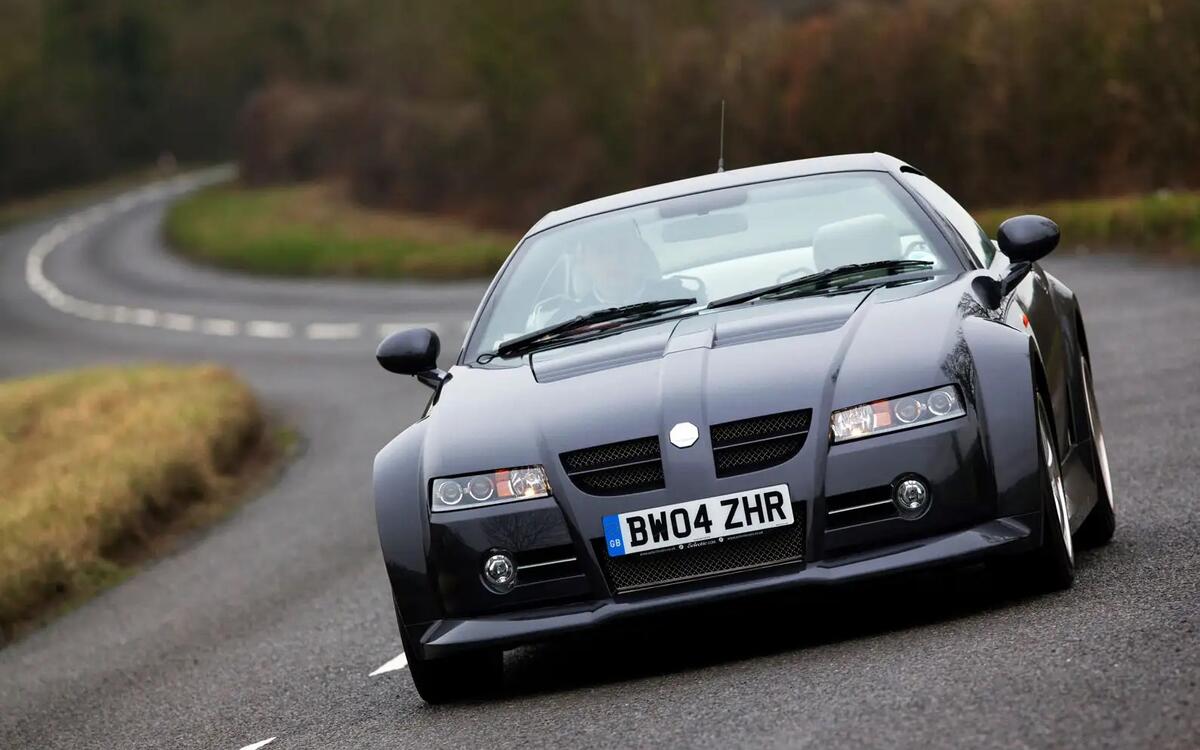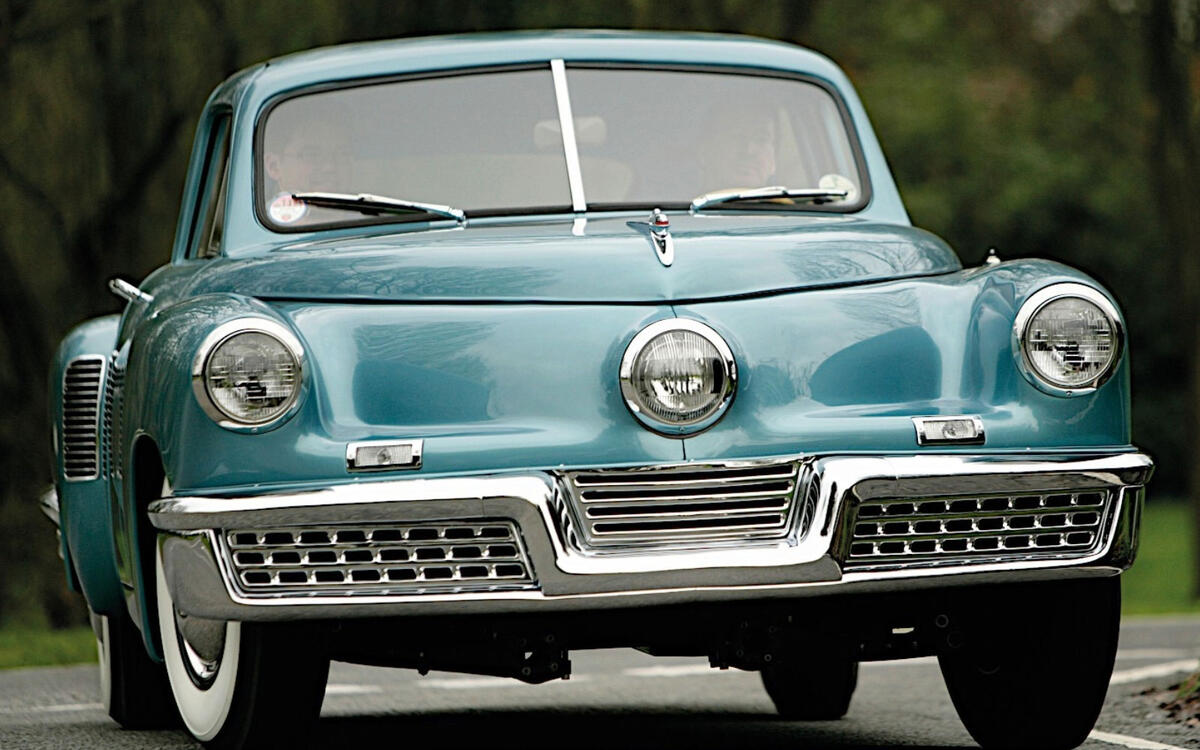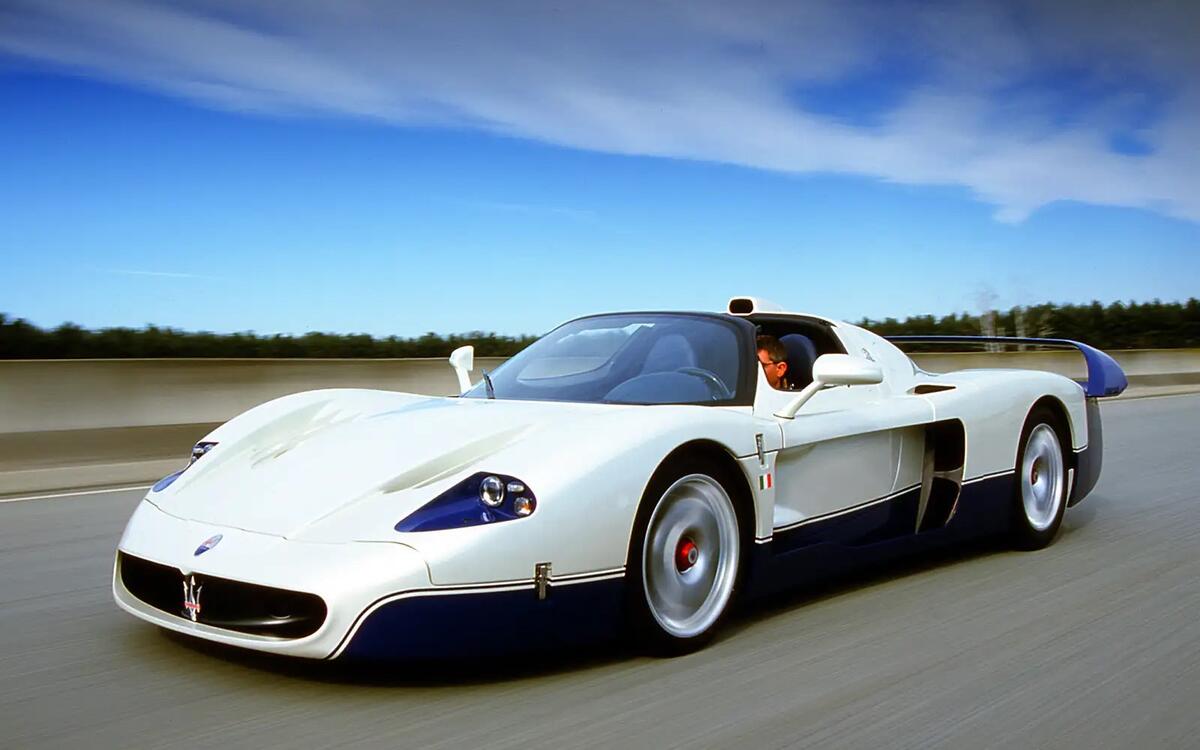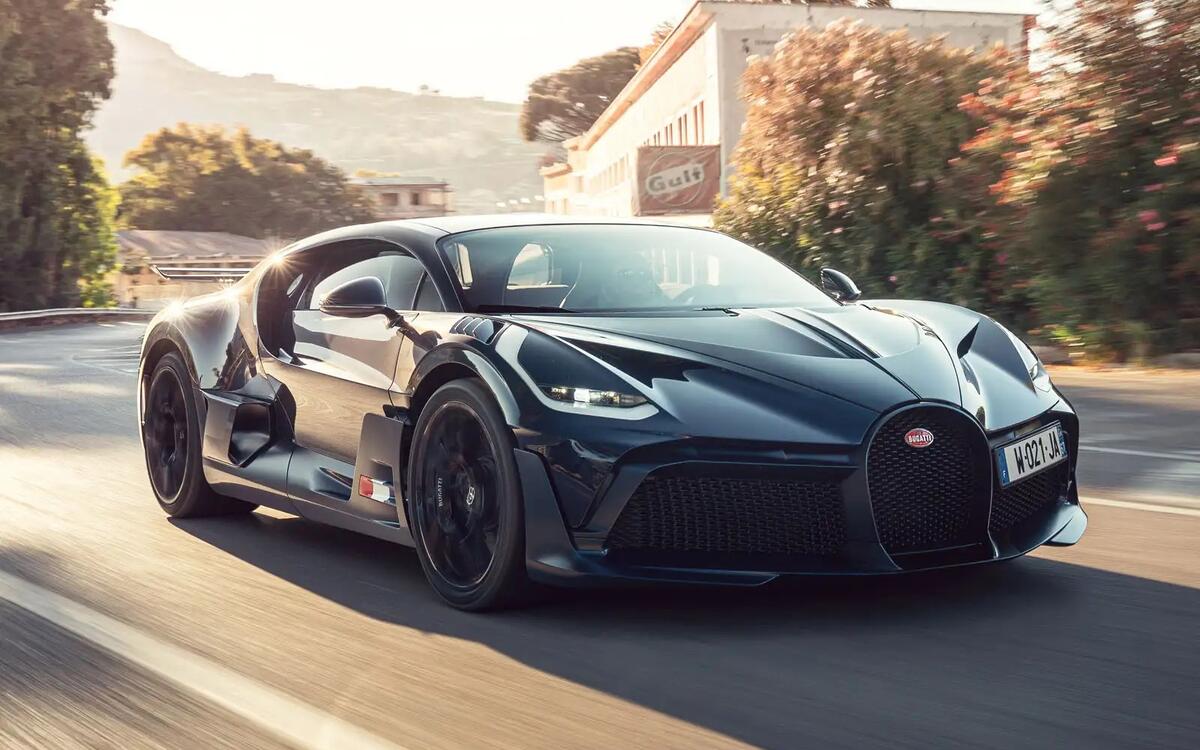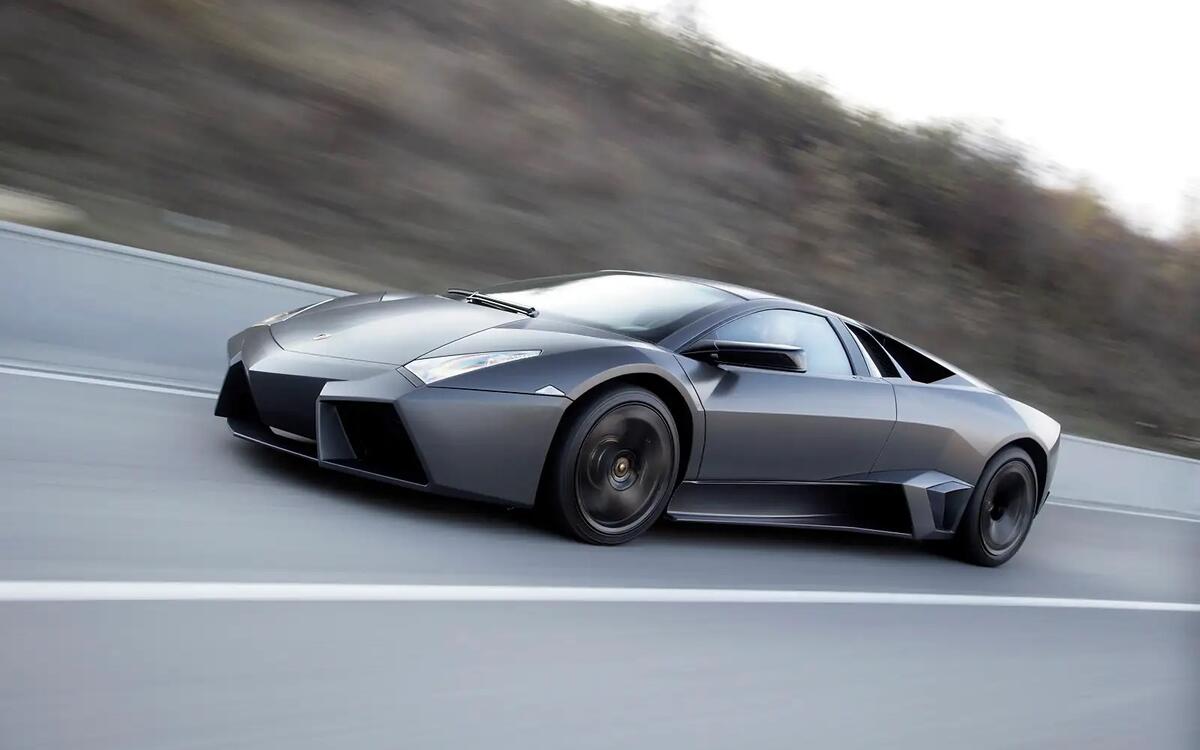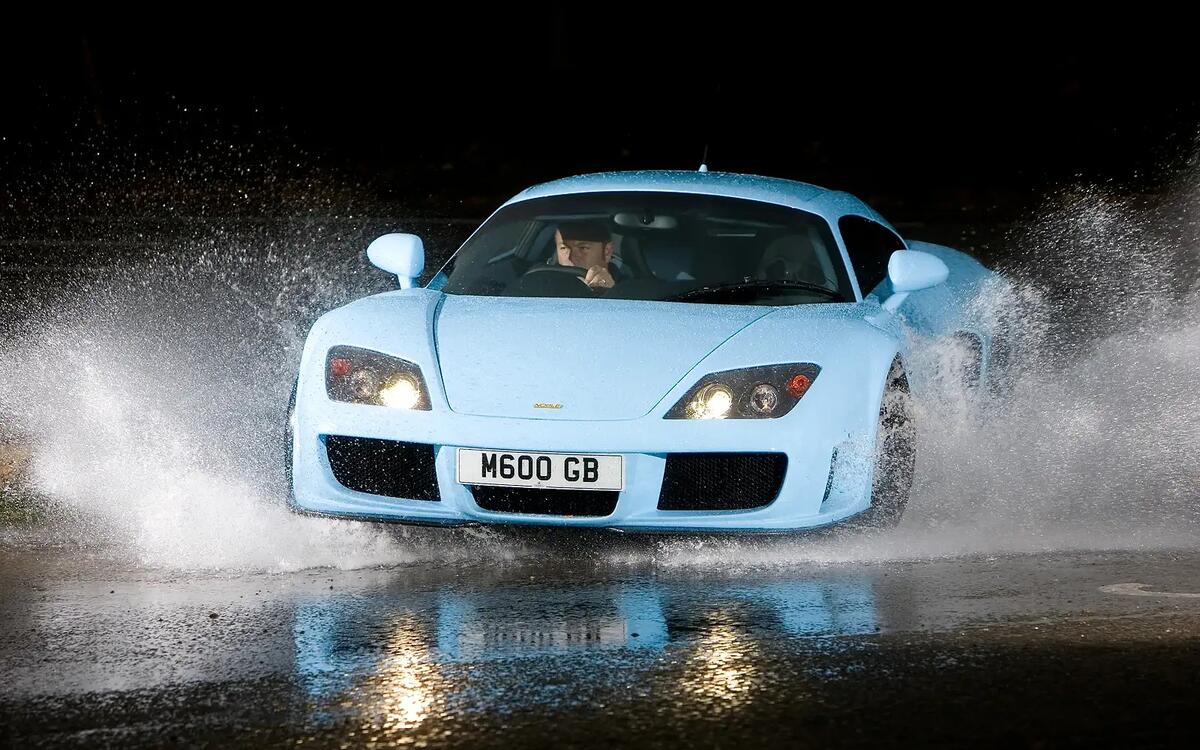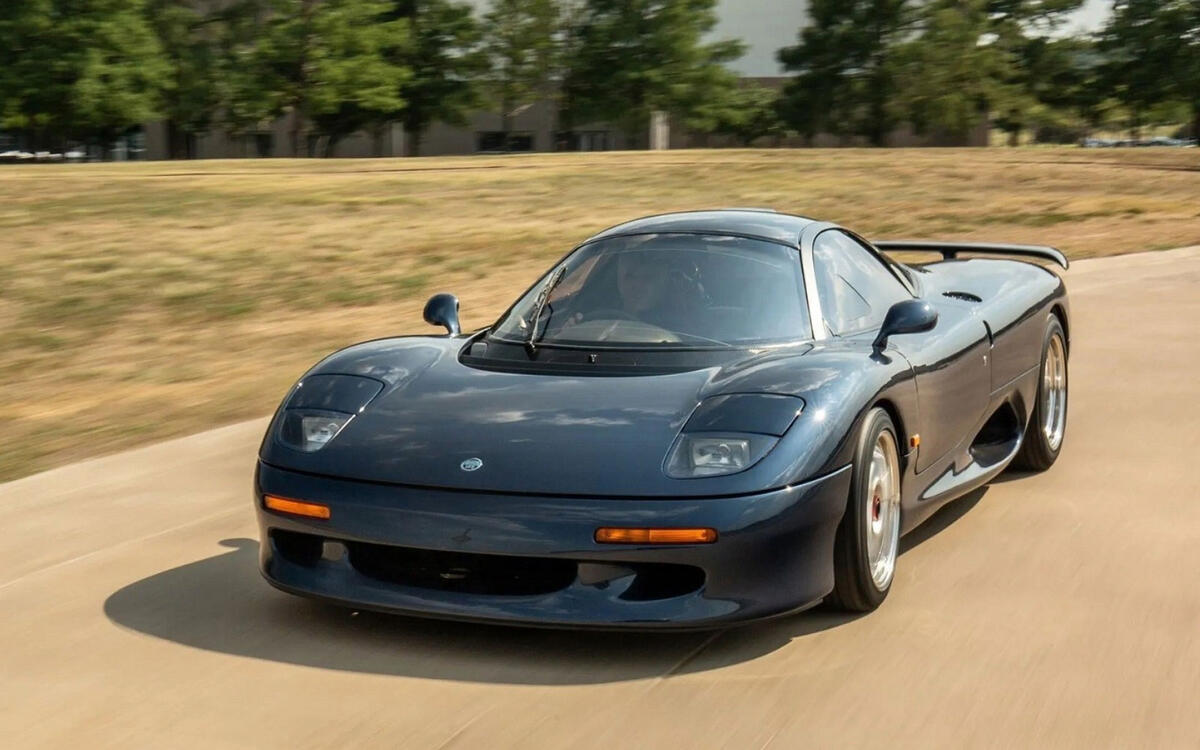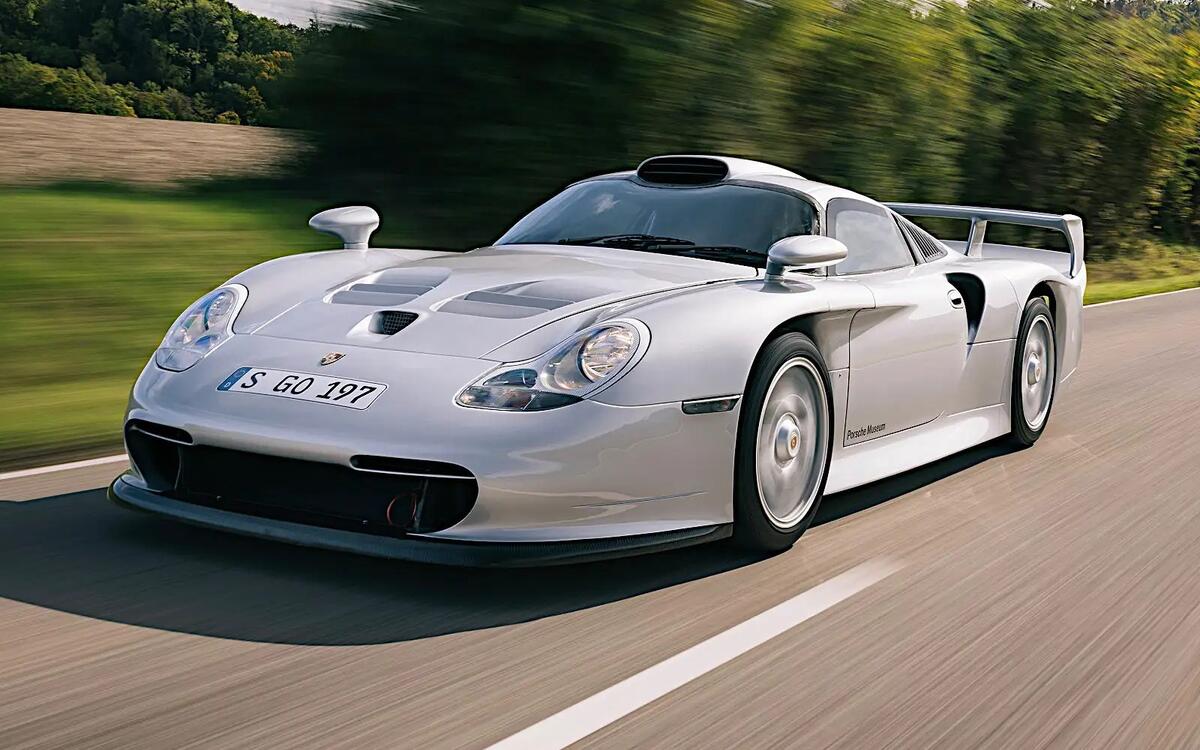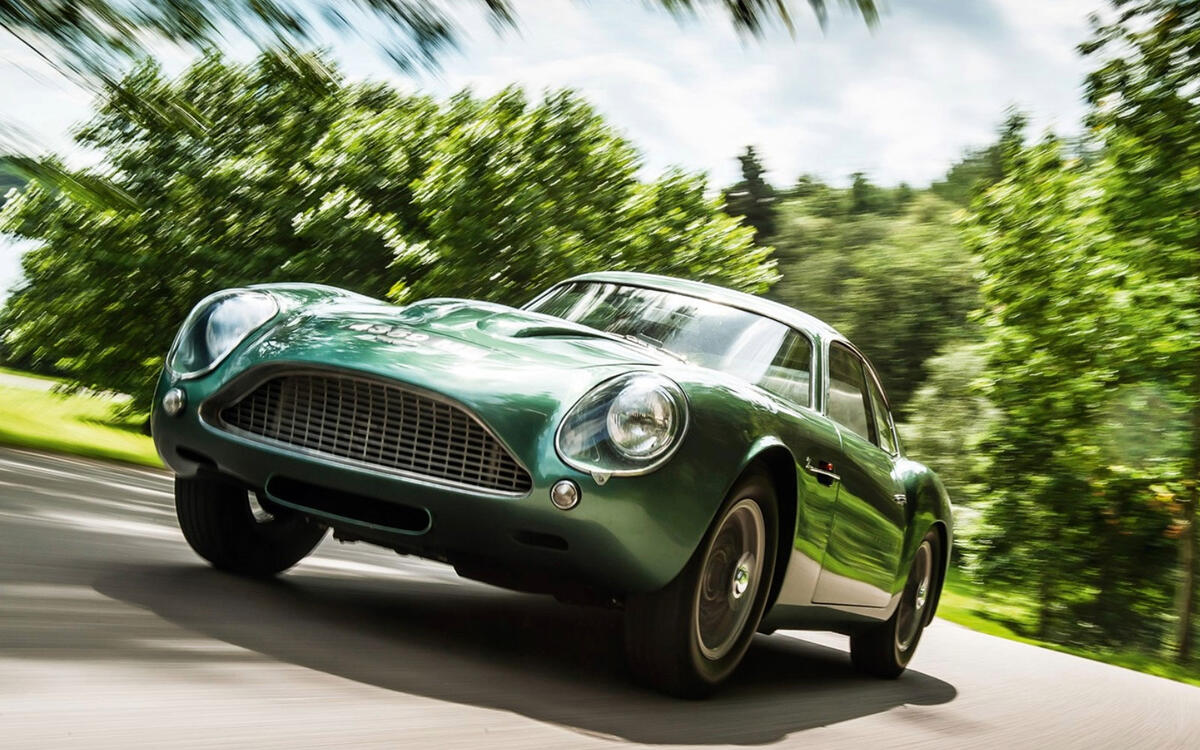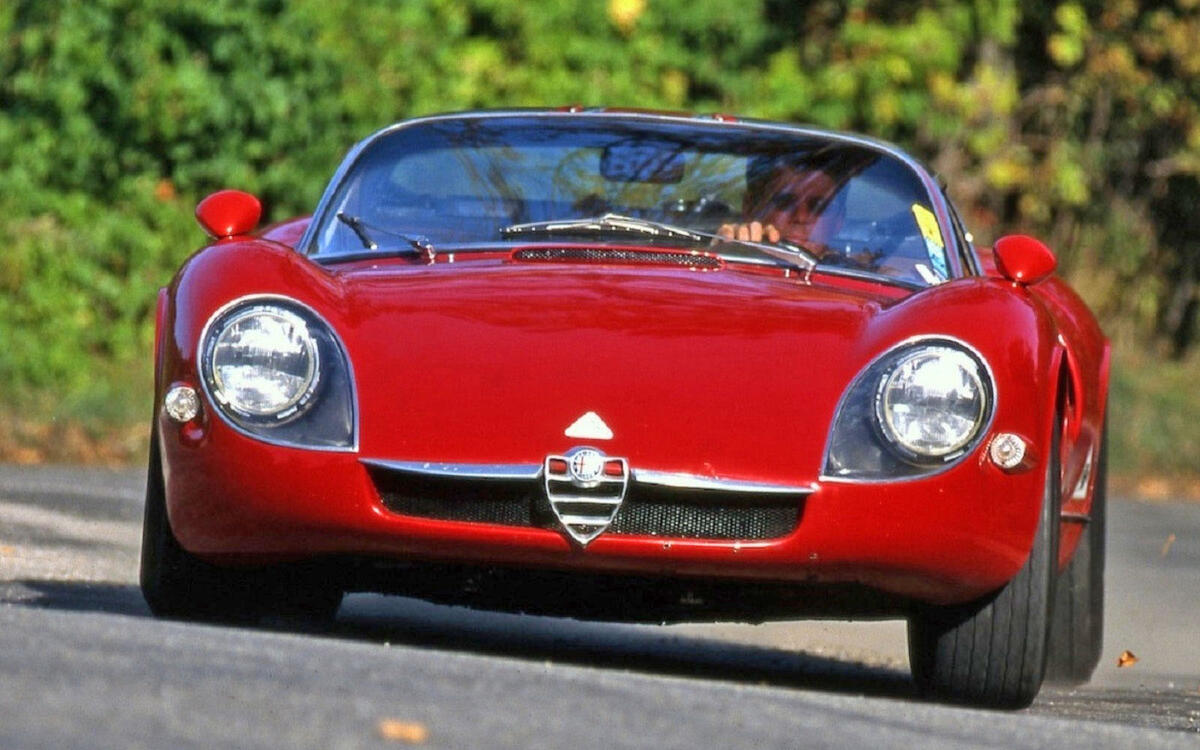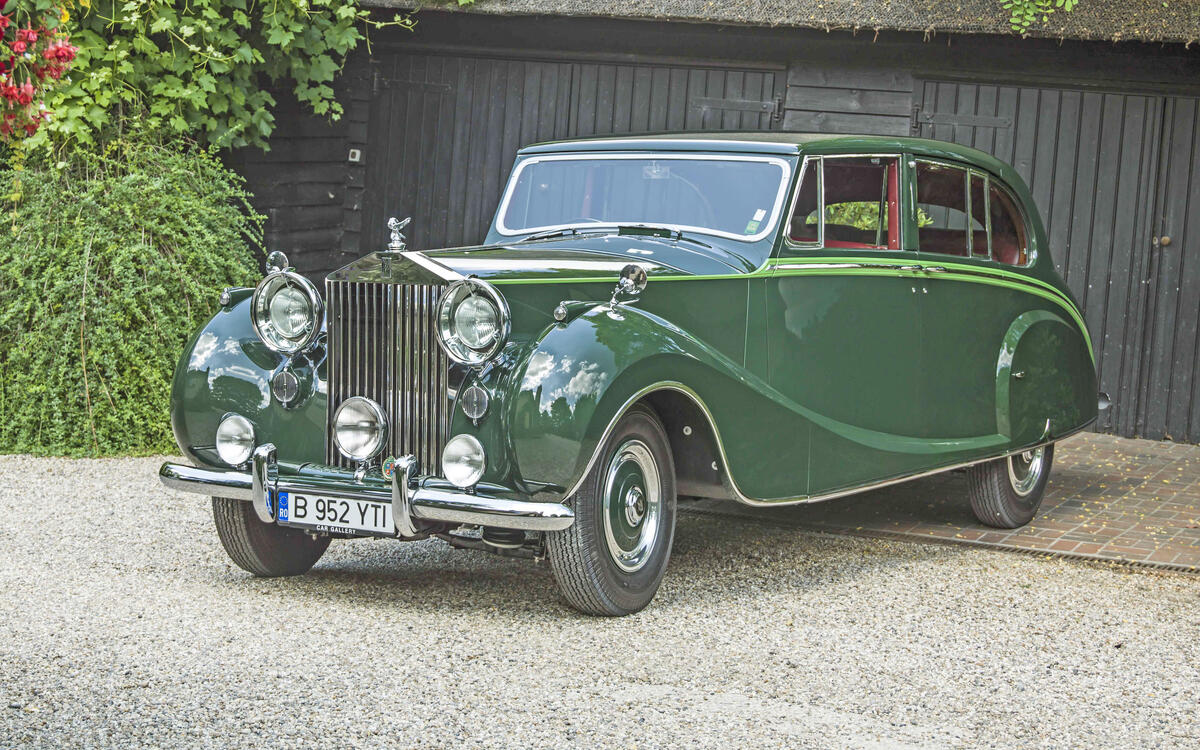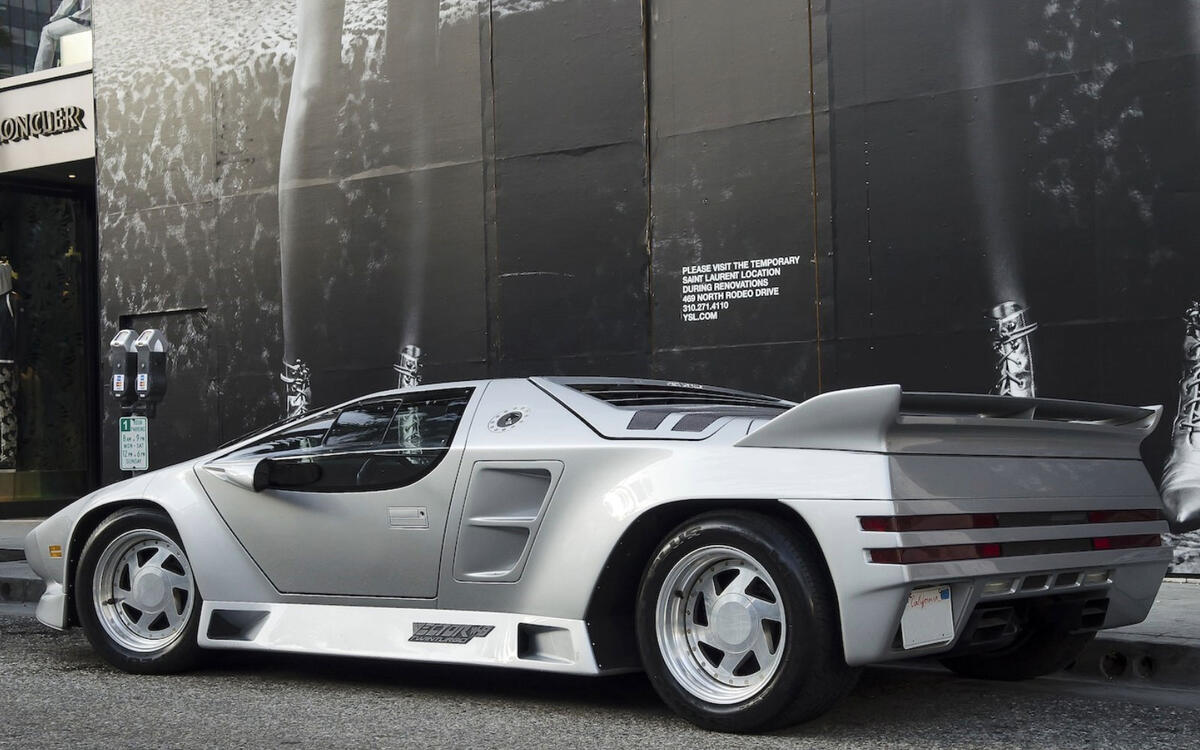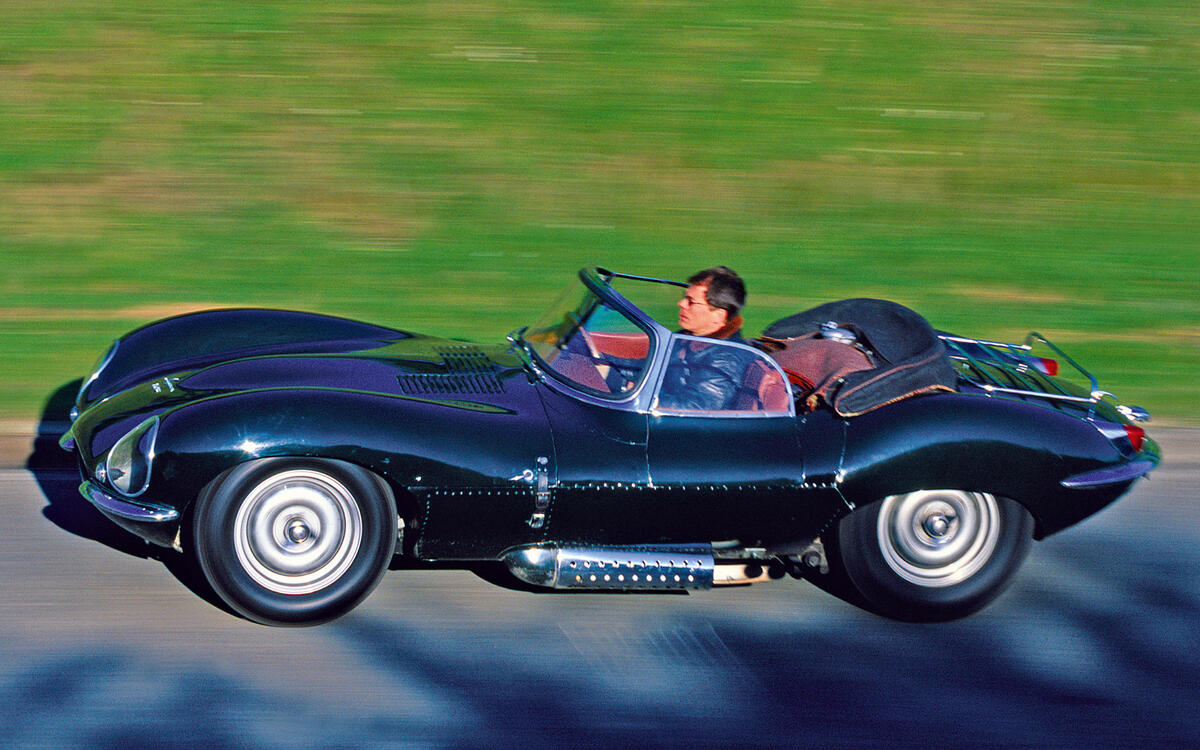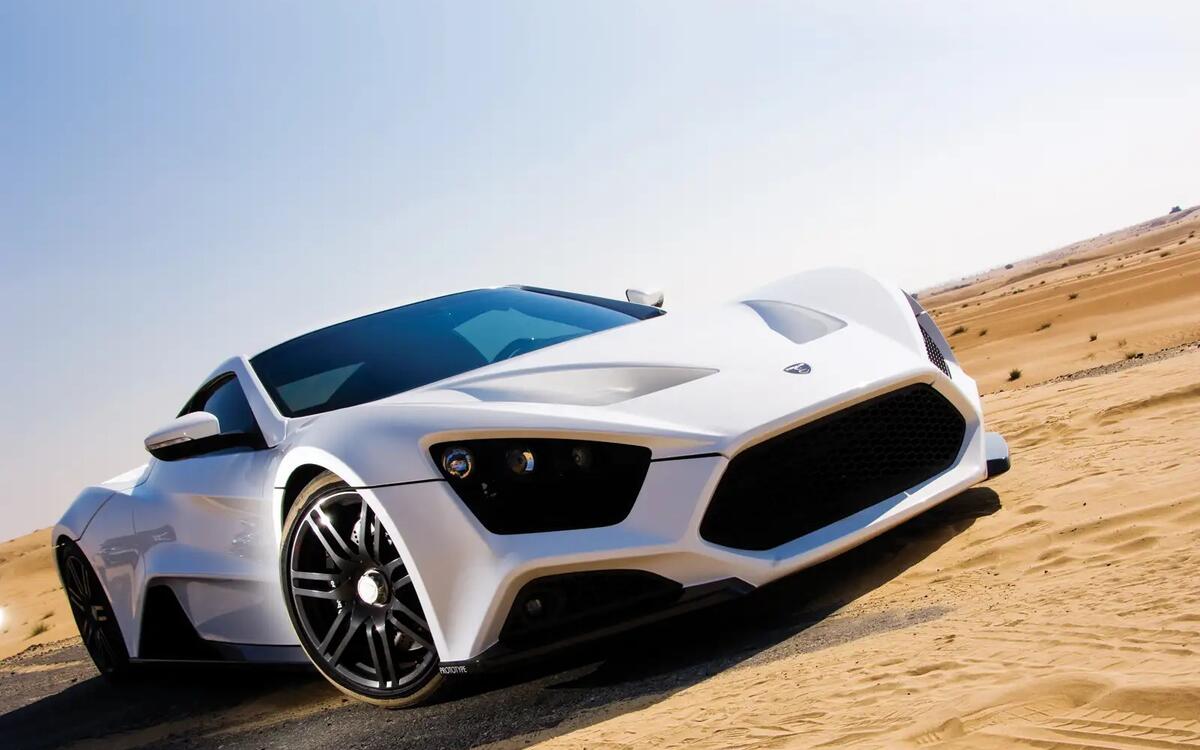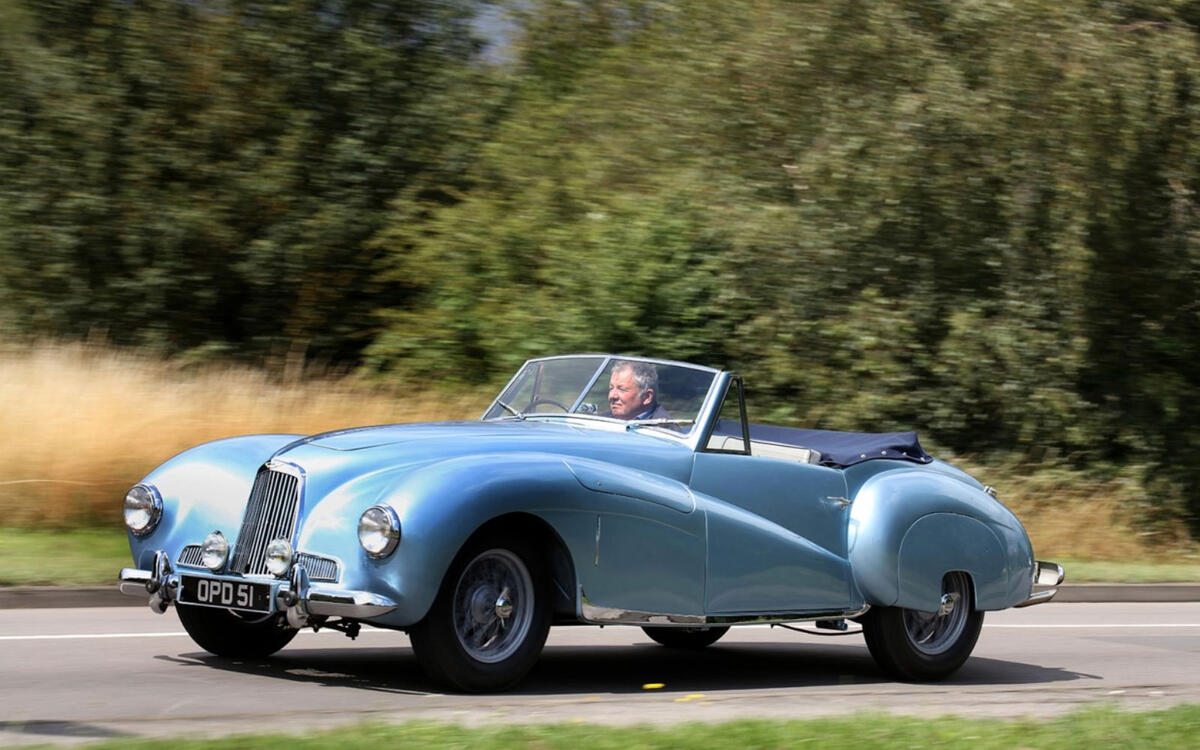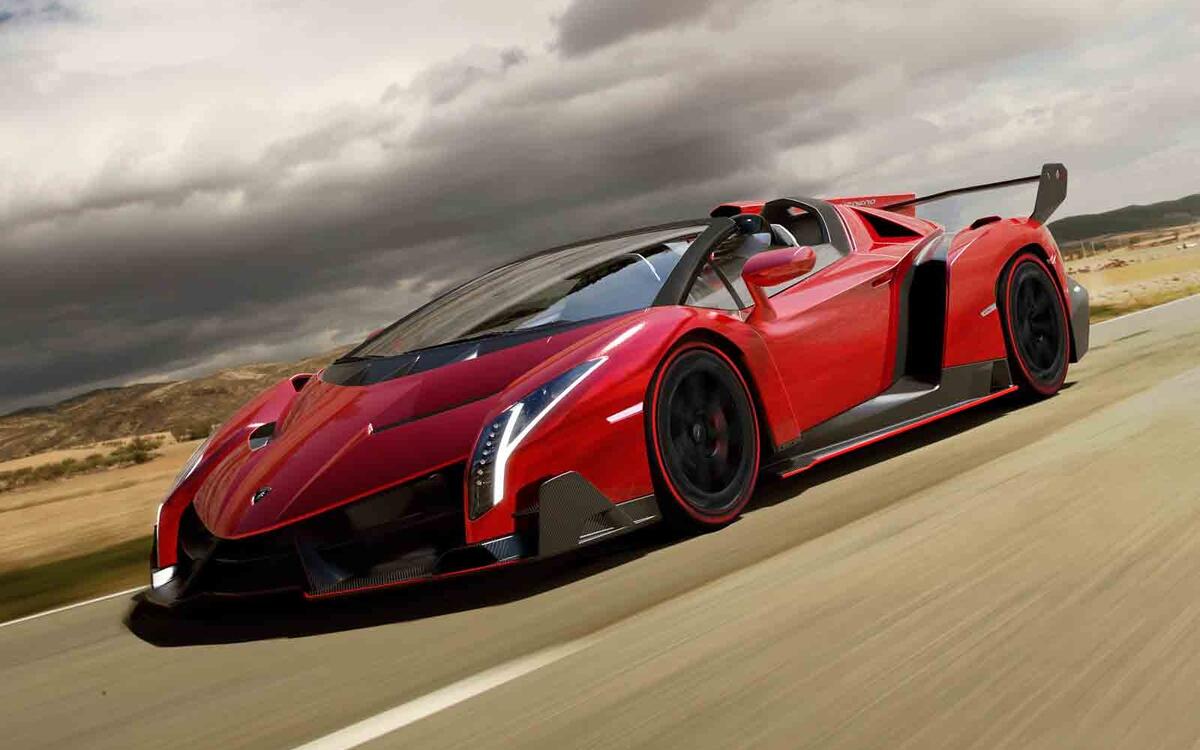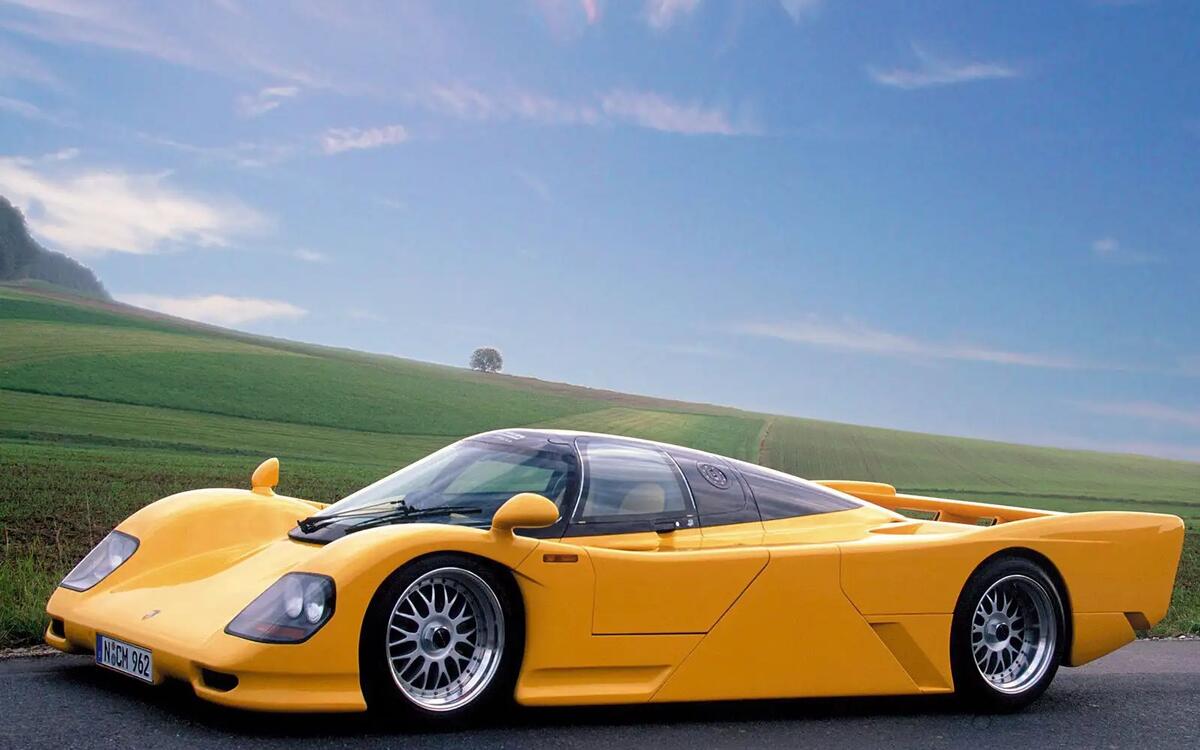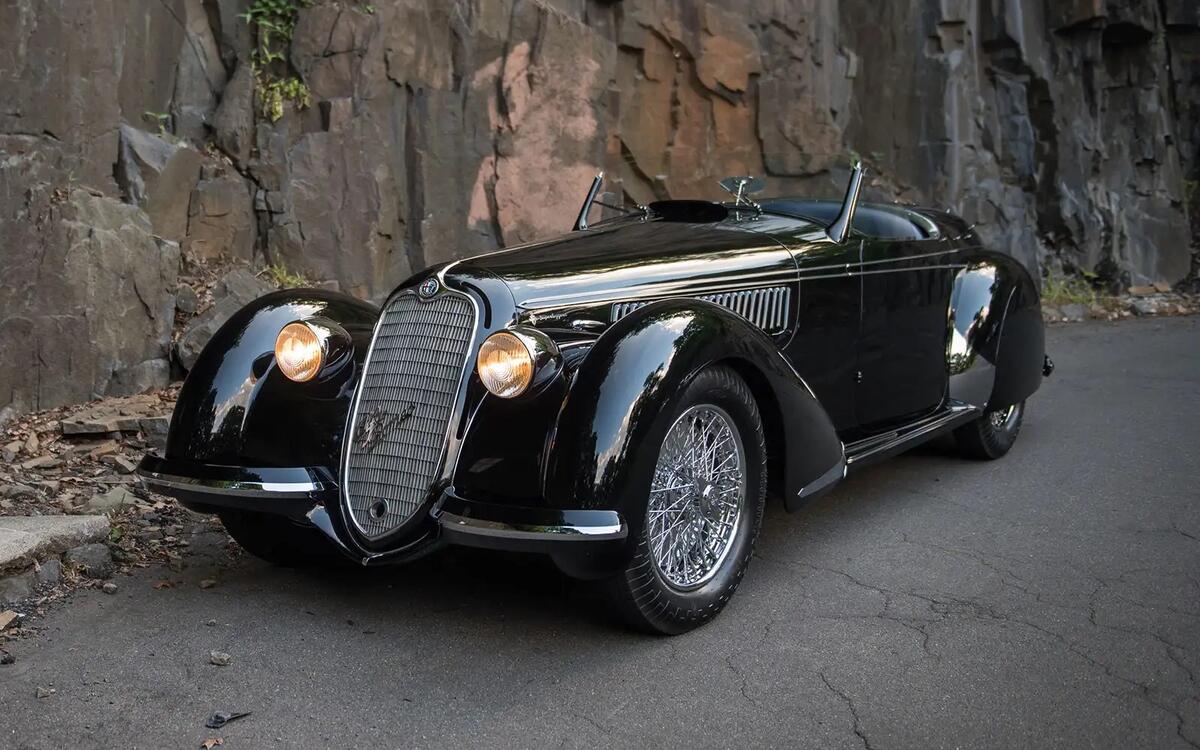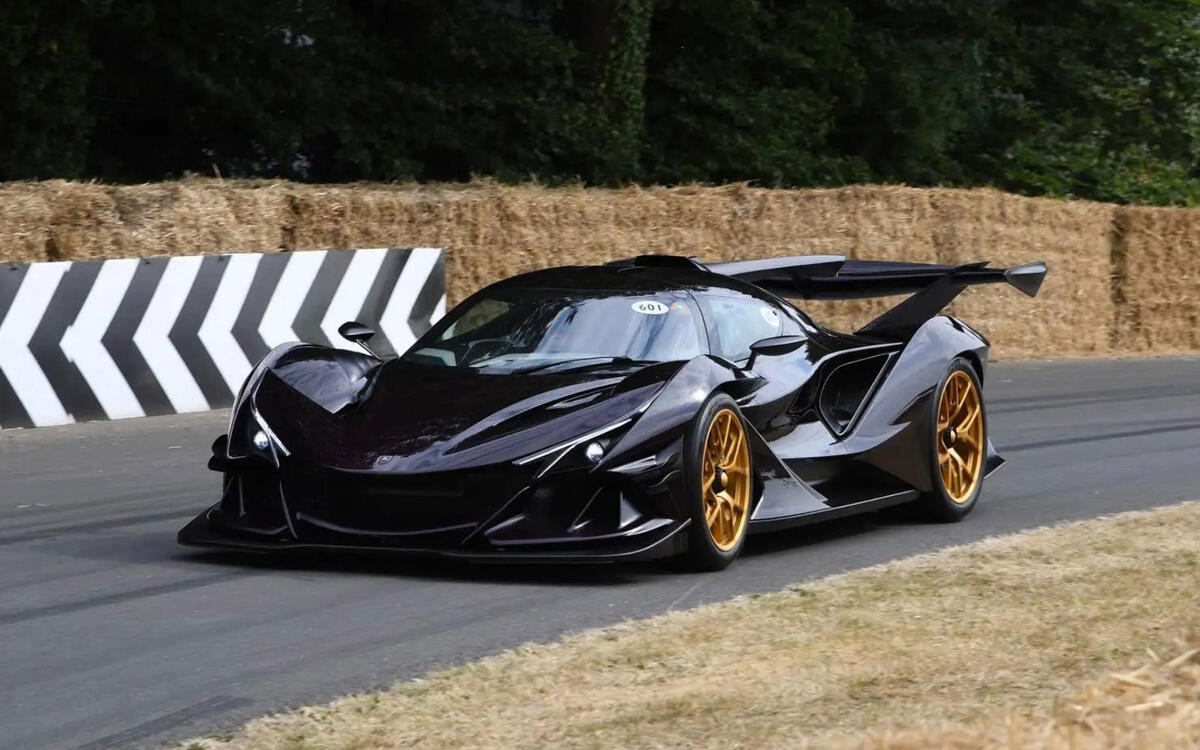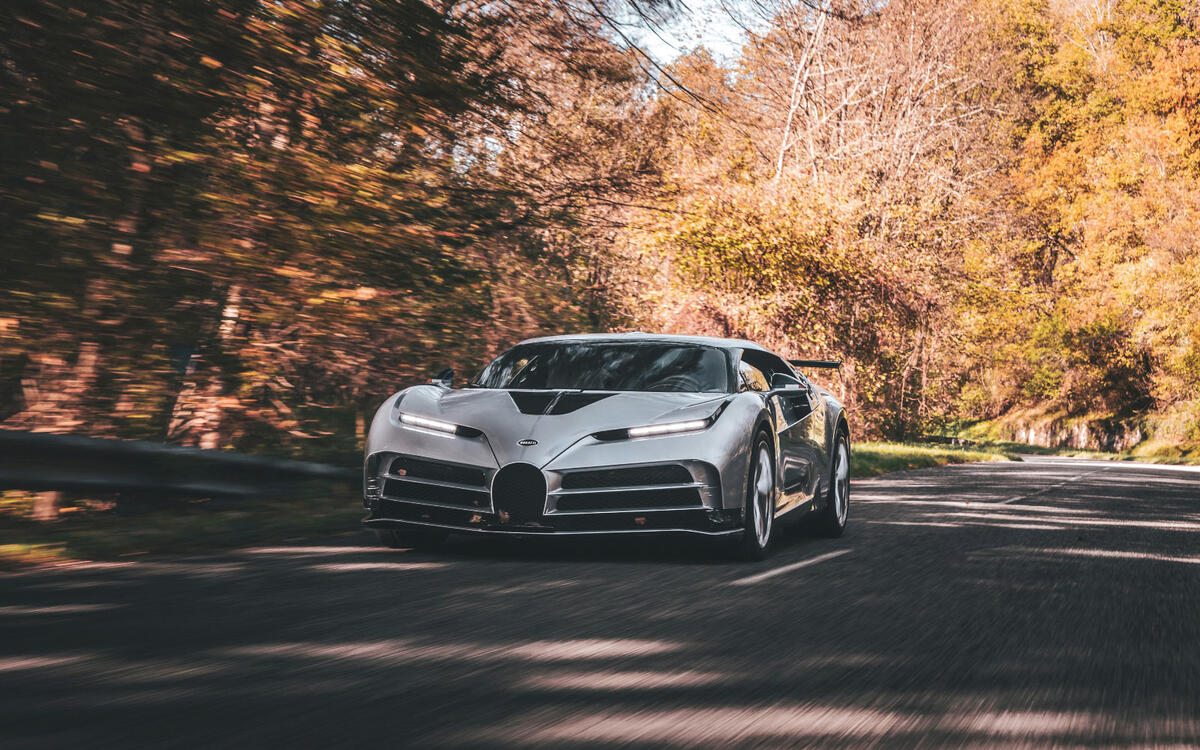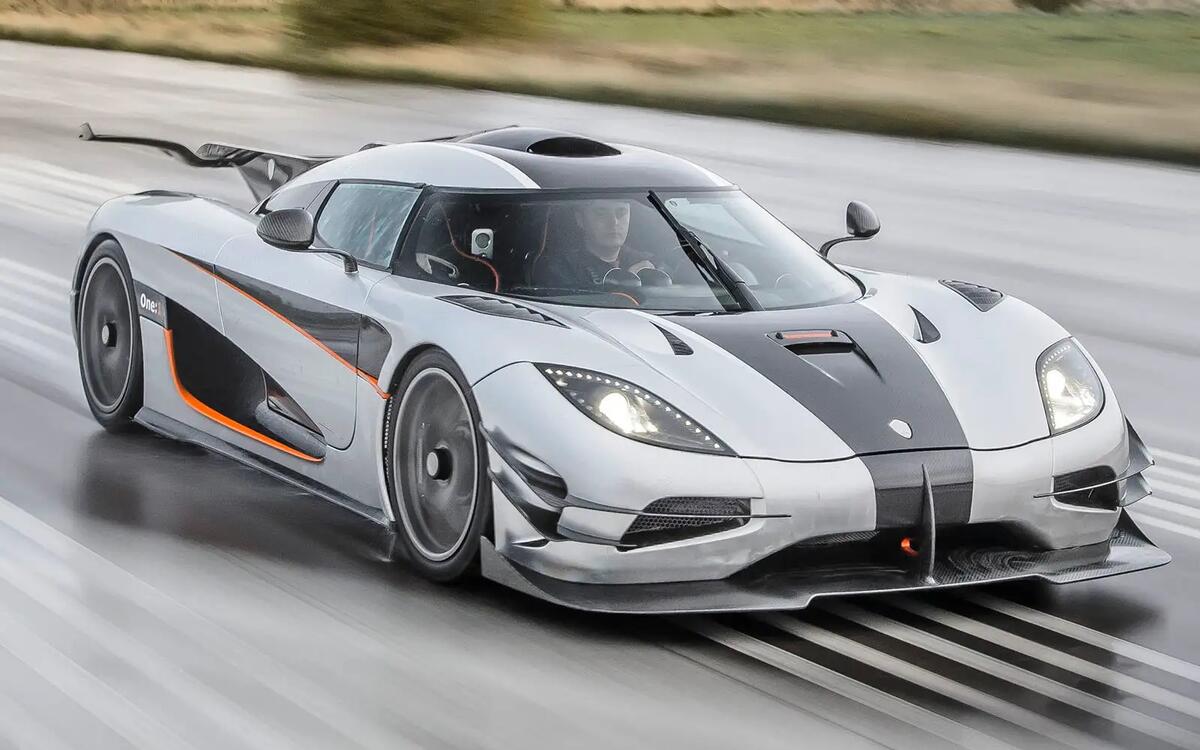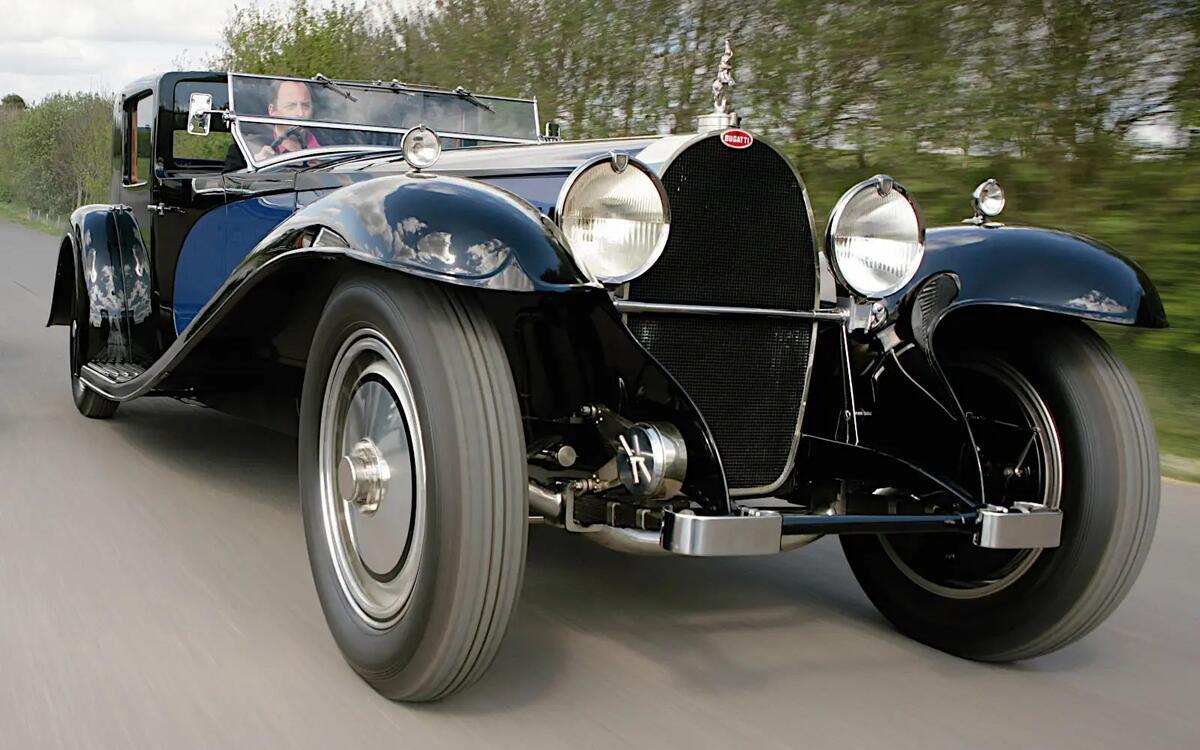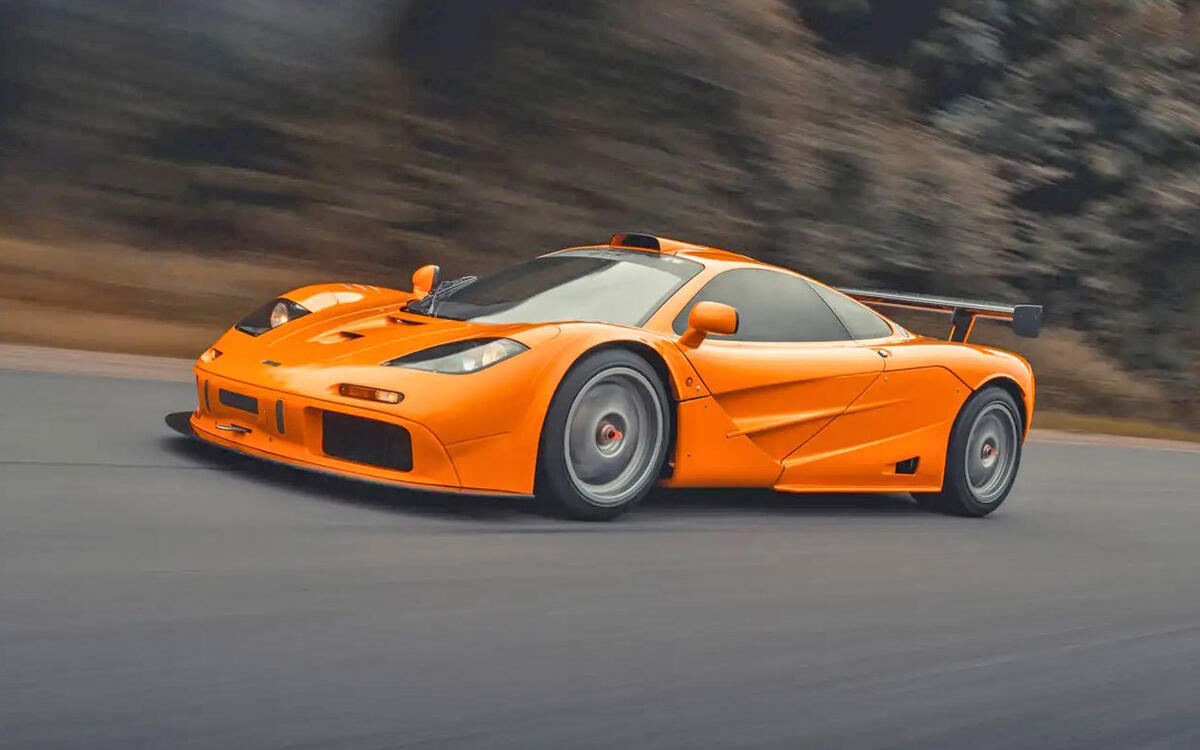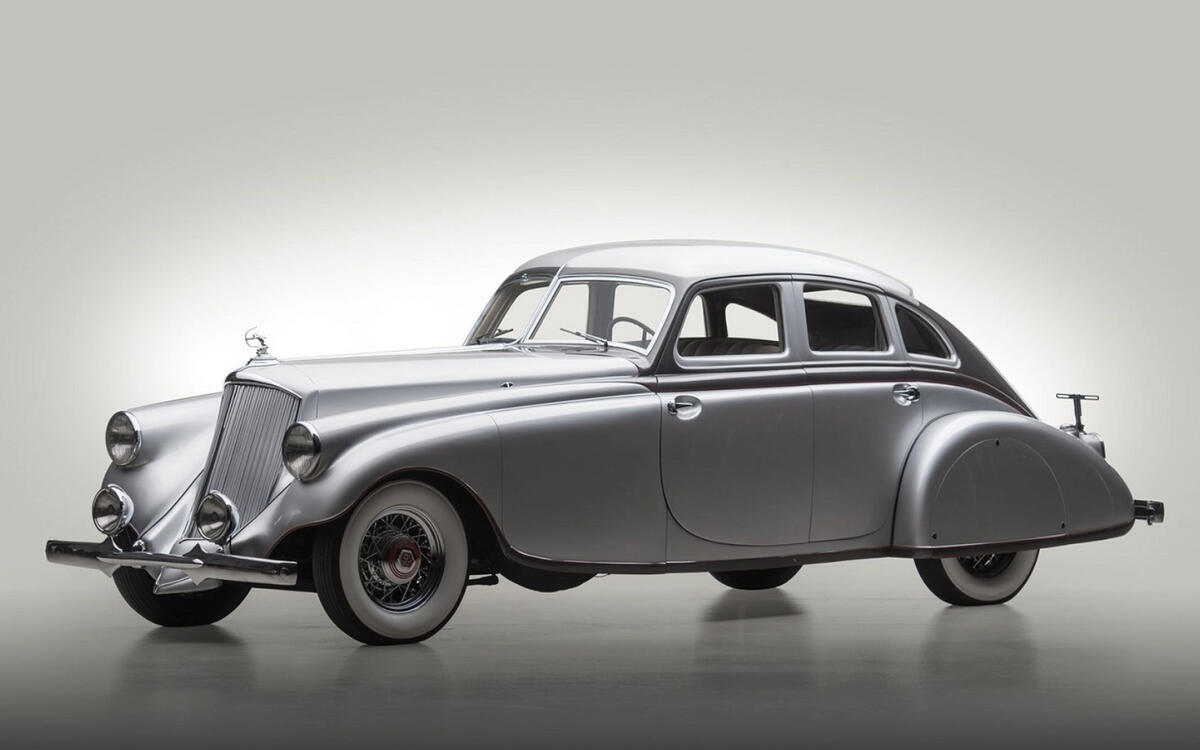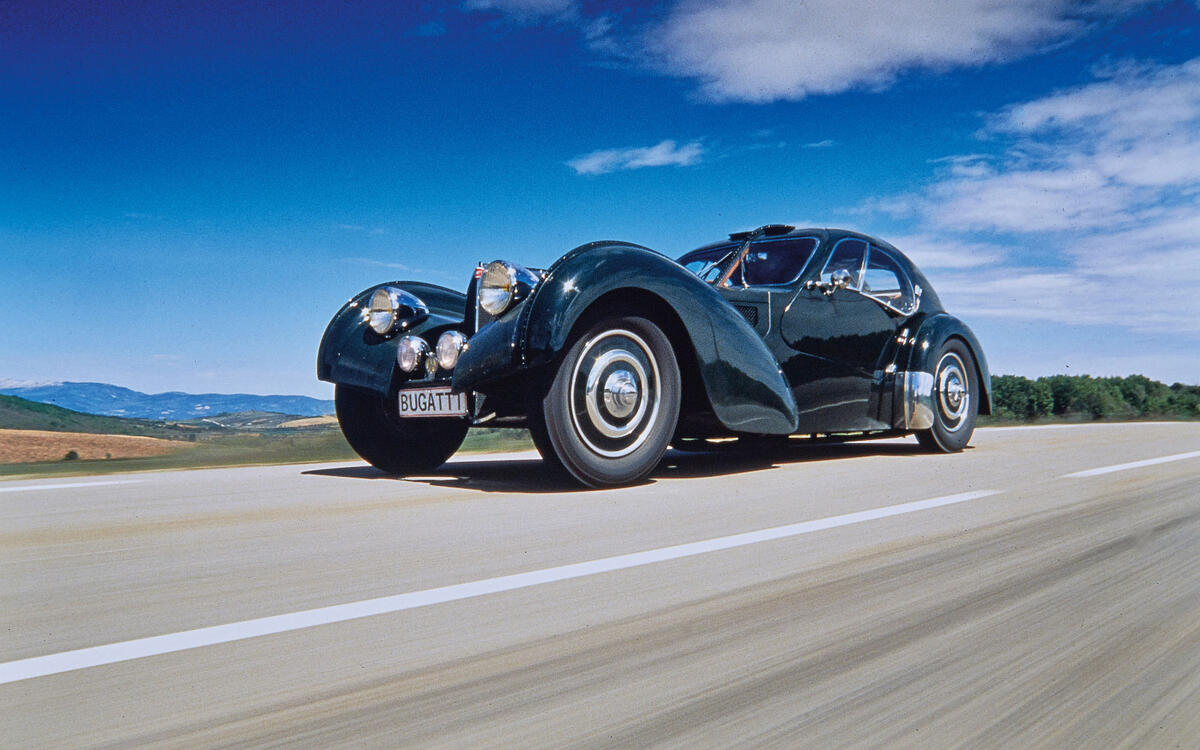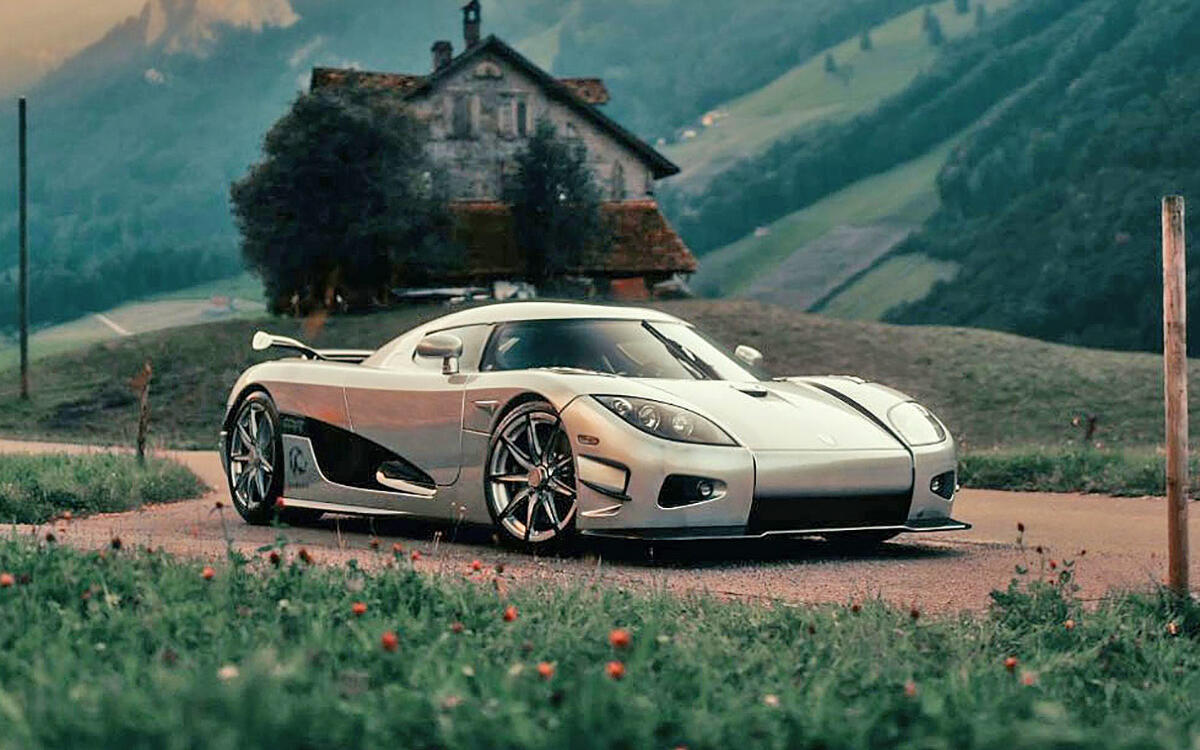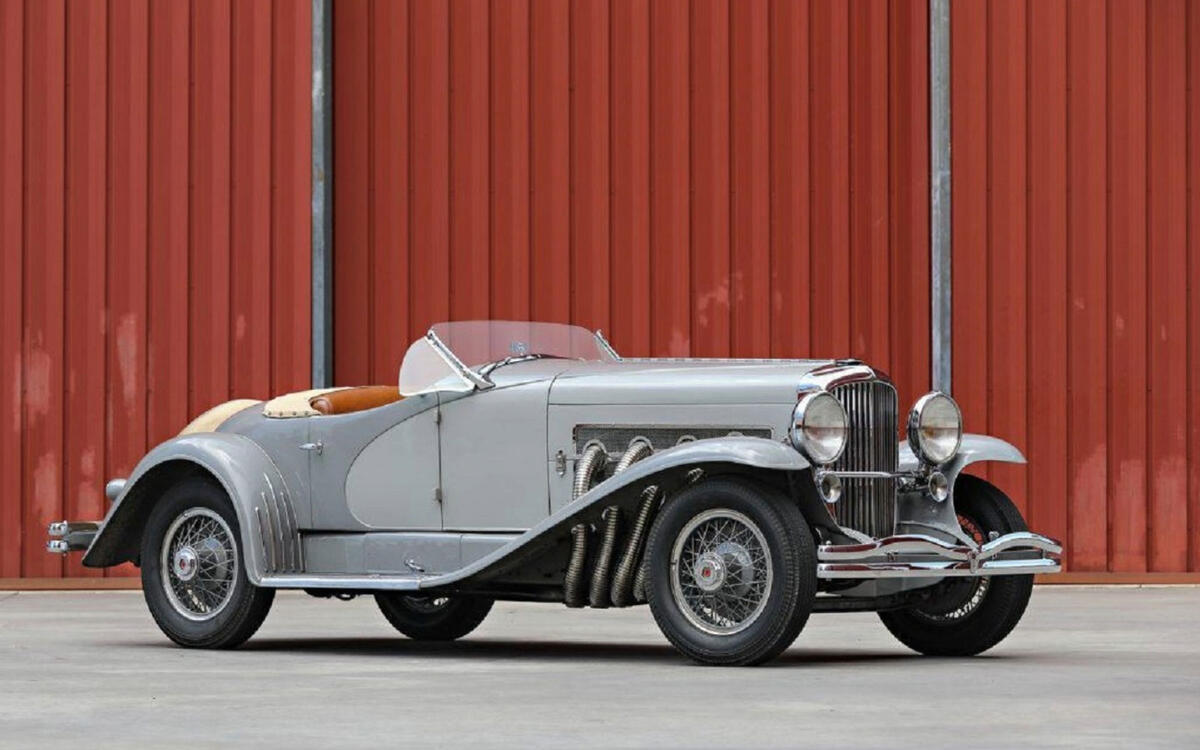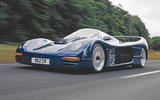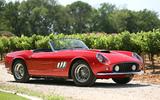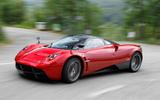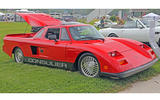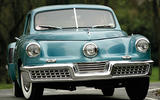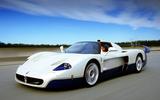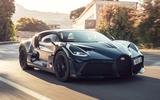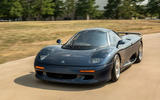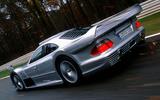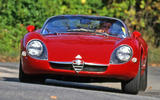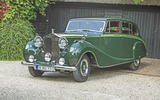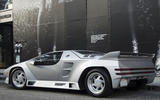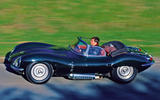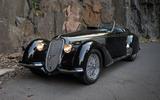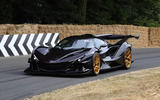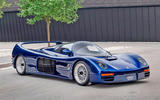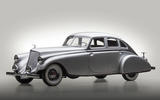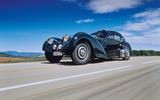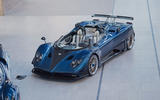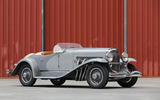 Slide of
Slide of
Occasionally, manufacturers give us limited runs of very special cars, exclusive to those who have piles of cash to part with.
Whether that was their intention, or something went sour along the way to mass production, here’s our pick of the world’s rarest road cars:
 Slide of
Slide of
Bugatti EB 110: 134 examples
In 1987, Ferrari F40 posters were strewn on bedroom walls all over the world — it was a race car for the road. 1991 arrived, and Bugatti, a company that last released a car in 1956, teased its sleek EB110. On paper, the F40 was still faster but the EB110 looked like an extraterrestrial spacecraft with all the cooling ducts and grooved bodywork — it had its own league, but it was too expensive for its time. From 1991 to 1995, just 134 cars were built in total. Bugatti went bankrupt just two years after production stopped, and was subsequently swallowed up by Volkswagen.
 Slide of
Slide of
Ferrari 250 GT California Spyder: 106
Considered to be one of the most collectable cars of all time, the California Spyder has deep-pocketed buyers flocking to auction houses to part with around $18m when one pops up on a rare occasion. Only 106 were made, with 56 cars being short wheelbase guises and the other 50 were long wheel base cars.
 Slide of
Slide of
McLaren F1: 106
The F1 remains to be one of the most iconic supercars ever made, and you would be lucky to see one driving around as only 106 cars were built. Through some clever bodywork sculpture, aerodynamic tweaking and a 620bhp naturally aspirated engine, the F1 holds the record for being the world’s quickest naturally aspirated car with its remarkable 240mph top speed.
 Slide of
Slide of
McLaren Speedtail: 106
Paying homage to the F1 with its three-seat layout is the Speedtail, one of McLaren’s more recent projects. It trumps the F1’s top speed with the help of modern technology, a NASA testing facility and turbochargers, but only by 10mph. Yet again, McLaren created an exclusive car with just 106 units.
 Slide of
Slide of
Pagani Huayra: 100
On Pirelli tyres, the Huayra is capable of 1.66g of lateral acceleration: flat out, it’ll hit 238mph. Pagani created a few variants of the Huayra, including a roadster, but in total only 100 cars were ever made. When first released in 2011, the base car was priced from £820,000 but this has now jumped to north of £1.5m.
 Slide of
Slide of
Consulier Industries Consulier GTP: 83
Mosler is more known now for its MT900 race car than its earlier production cars. This American car may not have looked as striking as a Lamborghini or Ferrari, but the firm claimed that in factory tests it could shame a Porsche 911, Chevrolet Corvette and Lotus Esprit when it came to the twisties. Consulier Industries then became Mosler in 1993 and various other iterations of the GTP were made such as the Intruder and Raptor. It’s believed that just 83 cars were made.
 Slide of
Slide of
MG XPower SV and SV-R: 82
MG Rover purchased Italian firm Qvale which meant that the Qvale Magusta, formerly known as the DeTomaso Bigua, would become the base for MG’s new X80 project. The X80, like the Bigua, would use Ford Mustang parts, and MG later changed the name to the XPower SV. Peter Stevens, designer of the McLaren F1, was then hired to tweak the production car to look more sinister than the concept. MG later released a more powerful SV-R guise of which only 42 were made, the other 40 being the standard car.
 Slide of
Slide of
Tucker ’48: 51
Also known as Torpedo, its prototype name, the 48 was famous for its groovy centralised headlight which rotated when the wheel was turned. The 48 wasn’t intended to be a limited run but the company’s Accessories Program left a significant scar on its reputation. After the war, demand for new cars was greater than supply and preference was given to veterans. Tucker, however, had a programme which stated that those who bought Tucker accessories would be given a definite spot for a car. This was investigated by various U.S officials and Tucker was accused of crime. The charges were later dropped, but Tucker’s reputation was squashed. Production stopped after just 51 cars.
 Slide of
Slide of
Maserati MC12: 50
The mid-2000s gave us plenty of exclusive cars such as the Mercedes-Benz SLR, Pagani Zonda and Maserati MC12. Like many others, the MC12 was built to homologate the model for GT racing. With Maserati and Ferrari exchanging notes under the desk, the MC12 was based on the Ferrari Enzo although various modifications were made to the engine and chassis. In total, just 50 cars were made.
 Slide of
Slide of
Lamborghini Centenario: 40
While it’s not unusual for Lamborghini to give us rare bulls, there were just 40 of the Aventador-based Centenario produced: 20 roadsters and 20 coupes. To celebrate 100 years of Ferruccio Lamborghini, also known as a centenary, Lamborghini created one of its wildest cars yet. It had the same right hook as the Aventador with 760bhp on tap, but with a little added drama.
 Slide of
Slide of
Bugatti Divo: 40
It may be track-focused but the Divo is a road car, and there are only 40, all of which were apparently sold before the car was even teased to the world. While slower on the straights when compared to its siblings, its 236mph flat out is still plenty, and being a track-bred car, being nimble was key for Bugatti. The French manufacturer also says the Divo pays homage to Gran Prix driver Albert Divo.
 Slide of
Slide of
Lamborghini Reventón
As per Lamborghini tradition, the Reventón is named after a fighting bull, although it also means “blowout” in Spanish. Lamborghini built 35 Reventóns in total: 20 coupes and 15 roadsters. The coupe shared the same underpinnings as the Murcielago LP-640 while the roadster used the Murcielago LP-670 SV’s. Not only was the bodywork inspired by jet fighters, but also the digital cluster.
 Slide of
Slide of
Noble M600: 30
It had a better power-to-weight than a Bugatti Veyron, as well as 650bhp, but this British supercar is quite scarce today. While Noble don’t divulge the production numbers, it’s said that around 30 M600s rolled off the production line – each car was hand built. Although it’s rare, low-mile cars have sold at previous auctions for around £150,000, quite a bit less than the £200,000 sticker price.
 Slide of
Slide of
Jaguar XJR-15: 27
With a bit of pressure from wealthy racing enthusiast customers, designer Tom Walkinshaw eventually caved and hired Peter Stevens to put his road racer concept into practice. The car would be a road variant of the XJR-9 and it was intended to be an alternative to the XJ220. 50 were planned, although 53 chassis were made, but in total just 27 road cars left the factory. It was a famously difficult car to drive fast, especially in the wet.
 Slide of
Slide of
Mercedes-Benz CLK GTR: 25
How do you beat the opposition in GT racing? Use their car, of course! Mercedes never had a motorsports outlet until the FIA announced the GT class. To help get the car ready more quickly, Mercedes took a McLaren F1 GTR, which they had previously purchased, and used it as a development mule. What we received was a McLaren F1 with an AMG body and engine. The series requirements stated that 25 road variants of the race car had to exist, so Mercedes built 25 – 20 coupes and five roadsters.
 Slide of
Slide of
Spectre R42: 23
What you’re looking at here is a Ford GT40. As bold and as untrue as that statement may seem, the R42’s builder, Ray Christoper, built GT40 replicas and the R42 was his version of a modern GT40. Underneath the R42’s similarly proportioned bodywork was a concept of the GT40’s monocoque chassis with the addition of honeycomb composite and folded aluminium. Even the name, R42, paid homage to the GT40 – the 42 meaning the height in inches and R for Ray. If you see one, put on a lottery ticket, as only 23 were made.
 Slide of
Slide of
Porsche 911 GT1: 21
Don’t be fooled by the 911 moniker, the GT1 only shared the front and rear lights with the Porsche 911 – from there onwards, it’s a bit of a Frankenstein. The front chassis is 993 911, the rear subframe is 962C as is the 3.2-litre twin-turbocharged engine. Of course, for the Straßenversion (road version) things were dialled down to meet emission laws, taking power from 592bhp down to 536bhp. Just 21 cars were made, and they are extremely valuable today.
 Slide of
Slide of
Aston Martin DB4GT Zagato: 19
The DB4GT was already handsome, but by the time Italian coachbuilder Zagato was done, it was bodacious. The sharp lines were smoothed over, and the entire car was lightened. Zagato then tuned the 3.7-litre, giving it a higher compression ratio. Just 19 cars were made, and one sold at auction in 2021 for $9.52m.
 Slide of
Slide of
Alfa Romeo Tipo 33 Stradale: 18
Equipped with a 2.0-litre V8, the Stradale was crowned the fastest standing kilometre production car, covering it in 24sec. Rather than keeping its racing technology to itself, Alfa Romeo decided to build a production car based on the Tipo 33 and share the technology with the public. Only 18 cars were made.
 Slide of
Slide of
Rolls-Royce Phantom IV: 18
It was a car that was, quite literally, fit for a queen as Queen Elizabeth had one in her collection. Rolls-Royce built just 18 Phantom IVs and each buyer was carefully selected by Rolls-Royce – only the worthy could own such a car. The Phantom IV was the only Rolls-Royce fitted with a straight eight engine and provided not only more power but was able to run longer distances, a must have for ceremonial and parade cars.
 Slide of
Slide of
Vector W8: 17
It could easily be considered as one of the most oddball cars ever built, but the W8 had stellar performance – 0-62mph in 3.9sec and a claimed 242mph top speed. Designer Gerald Wiegert had a dream of building the ultimate sports car and gained most of the design inspiration from the Alfa Romeo Carabo. It sat on a monocoque chassis with a honeycomb floorpan and the 625bhp twin-turbocharged 6.0-litre V8 was capable of 1200bhp with the boost turned up. In 1993, the Vector went into receivership and only 17 cars plus two mules were made.
 Slide of
Slide of
Jaguar XKSS: 16
The Jaguar D-Type secured its place in Le Mans history after consecutively winning it three times. It became a legend as a result, and after Jaguar withdrew from competition in 1956, several completed, uncompleted and unsold D-Types sat in the factory. Jaguar chief Sir William Lyons spotted an opportunity to recoup some funds by turning these cars into road cars. 25 cars were planned but only 16 made it. Unfortunately, a fire at the factory in 1957 destroyed the remaining nine cars.
 Slide of
Slide of
Zenvo ST-1: 15
Another hand-built rarity to make our list is the ST-1, many of the components of which were taken from German and American cars. Zenvo is a Danish company that was founded in 2007. By 2009, the first ST-1 was built and it was ready to take on Ferrari. It used a 7.0-litre LS7 V8 with two turbochargers, this meant an output of 1089bhp. There were no intentions to make any more than 15 ST-1s and each sold for £750,000.
 Slide of
Slide of
Aston Martin DB1: 15
We’re now at the DB12, but Aston Martin’s first car under David Brown’s ownership was the 2-Litre Sports, also known as the DB1. It had a 90bhp engine, and while that may not sound like much today, it could propel the lightweight DB1 to 93mph, quick by 1948 standards. 15 DB1s were made before the DB2 took over.
 Slide of
Slide of
Lamborghini Veneno: 13
The final Lamborghini on our list is the Veneno: a bull introduced in 2013 to celebrate 50 years of Lamborghini. While it shared the same 6.5-litre V12 with the Aventador, the Veneno produced 740bhp due to some tinkering that Lamborghini did with the exhaust and air intake. Lamborghini’s interpretation of this car was racing prototype built for the road. According to Lamborghini, just 13 cars were made.
 Slide of
Slide of
Bristol Fighter: 13
The Fighter packed a 525bhp V10 punch which meant 0-60mph in 4.0sec and a top speed of around 220mph. Bristol made 20 Fighter chassis, although only 13 cars were finished before the company went bankrupt. The 8.0-litre V10 was borrowed from a Dodge Viper, as were several other components. You would have a hard time requesting to drive one as Bristol was only interested in those buying.
 Slide of
Slide of
Dauer 962: 13
It’s a dream for many to drive a Le Mans car, especially on public roads, and in the early 1990s, the German racing team made that happen with the 962. The 962s were bought from Porsche and helped the team win the Le Mans 24-hour race twice. With funds depleting and two disastrous seasons, the team retired. Several 962 chassis were left, and rather than abandoning them, they turned them into 13 highly exclusive road cars. Their biggest fan was the Sultan of Brunei who bought five.
 Slide of
Slide of
Cizeta-Moroder V16T: 12
Pop-up headlights have always been cool, but why just have two when you can have four? This was just one of many unique features that were equipped on the V16T. It may look like a forgotten Lamborghini, as the designer of the Lamborghini Countach, Marcello Gandini, was hired and used a design that was proposed for the Diablo. Due to various production complications, only 12 were made, two of which went to America.
 Slide of
Slide of
Alfa Romeo 8C 2900B Spider: 12
There weren’t many options in the 1930s for a sports car, even if you were wealthy. MGs were inexpensive and the Mercedes-Benz 540k was massive. This left Bugatti, which was potent, of course. Enter the 8C – the most advanced and compelling sports car of the era. A 180bhp 2.9-litre with dual Roots-type superchargers tied to a four-speed transmission sat underneath. Only 12 Touring Spiders were made, seven being on the ‘Lungo’, or long, chassis.
 Slide of
Slide of
Apollo Intensa Emozione: 10
14 years had passed since Apollo released the bonkers-looking Gumpert Apollo before it returned with the Intensa Emozione. Rather than building a conventional supercar, Apollo opted to sculpt the Emozione’s design with nature in mind, taking influence from marine animals and insects. Under the praying-mantis-like bodywork was a Ferrari-derived 6.3-litre V12 with 780bhp. Apollo announced that only 10 cars would be made, costing roughly £2m each.
 Slide of
Slide of
Bugatti Centodieci: 10
Bugatti has been clever when designing the Centodieci, keeping with its new model shape but injecting some EB110 class. ‘Centodieci’ is Italian for ‘110’, of course paying homage to the EB110. The W16 powerplant churns out 1,578bhp although an electronic limiter kicks in at 240mph. They cost £9m new and only 10 cars were produced.
 Slide of
Slide of
Koenigsegg One:1: 7
We’ve had sports cars, supercars and hypercars, but none of these categories fitted Koenigsegg’s new One:1, so a new megacar category was created to celebrate the car’s one megawatt of power. The name was inspired by the 1:1 hp-to-kg ratio. It’s equipped with a 1360bhp 5.0-litre V8 and the entire car weighs just 1360kg. Koenigsegg decided to build seven cars and call it a day.
 Slide of
Slide of
Bugatti Royale: 6
Another Bugatti to make our list is the Royale – a car that had such a long bonnet that it was often difficult to make out the hood ornament in misty weather. It weighs 3175kg, has a 300bhp straight-eight engine and it measures 6.4m in length, making it one of the largest cars in the world. Ettore Bugatti intended to build 25 Royales which would then be sold to royalty during the great depression — a period which not even Royalty were buying such cars. Six cars were made in total.
 Slide of
Slide of
McLaren F1 LM: 6
McLaren snatched the overall win in the 1995 Le Mans 24 hours with the F1 GTR, and what better way to honour such a car than building a road variant. The LM used the chassis from the regular F1, but the LM was lower and meaner, same could be said about the interior, however the bare necessities and power remained unchanged. Six cars were built but only five went to new homes – McLaren kept one to help advance development of the current F1 chassis.
 Slide of
Slide of
Schuppan 962 CR: 6
The 962 CR was built by Australian race car driver Vern Schuppan to honour his 1983 24-hour Le Mans victory, which he did in a Porsche 956. With backing from Japanese investors, Schuppan began developing the 962CR from the ground up with a production number of 50, allowing the car to race at Le Mans. Sadly, the Japanese economy collapsed in 1992 and after just six cars Schuppan’s company declared bankruptcy.
 Slide of
Slide of
Pierce Arrow Silver Arrow: 5
American company Pierce Arrow had its hands on many projects such as bicycles, boats, fire trucks and camping trailers, but it also built five luxury cars in just three months. Its lush looks would be enough to activate the prying eyes of those wealthy enough to afford a Rolls-Royce. It was also more powerful than the Rolls-Royce of the era, with the Silver Arrow having a 175bhp 7.5-litre V12.
 Slide of
Slide of
Bugatti Type 57 SC Atlantic: 3
This could easily be considered as one of the world’s most beautiful cars, the rarest and most expensive – considering that limited edition 1:8 Atlantic diecast models go for £17,000. The Atlantic’s bonnet length is considerable at 3.7m, it has six exhaust pipes and a raised mohawk-like seem runs from the front to the back. Its 3.3-litre and just shy of 200bhp could push it to 124mph, this was groundbreaking considering that horse-drawn carts could still be seen on many roads. Just three cars were built for customer resale.
 Slide of
Slide of
Pagani Zonda HP Barchetta: 3
Your ‘average’ Zonda is a rare sight on any road, but Pagani took things a step further with the HP Barchetta and made just three examples. The delectable HP Barchetta is a tribute to the car that gave Pagani such a legendary status. When released, it cost £13.4m.
 Slide of
Slide of
Koenigsegg CCXR Trevita: 2
Trevita or “Three Whites”: Koenigsegg gave its limited run of just two cars its name because of the way their unique fibre solution transformed the carbon fibre bodywork, making it sparkle like diamonds under the sunlight. It put out over 1,000bhp and it had an estimated top speed of just shy of 250mph. One car is said to belong to boxer Floyd Mayweather Jr, while the other belongs to billionaire hotelier Antik Bose.
 Slide of
Slide of
Duesenberg SSJ: 2
Even today, 400bhp is still a substantial amount but in the 1930s those figures were ludicrous and the SSJ claimed the title of the world’s fastest production car prior to WWII. Only two were produced, sold to actors Gary Cooper and Clark Gable. The SSJ was the short wheelbase sporting guise of the Supercharged J, an SSJ sold for $22,000,000 at auction in 2018.
Access control:
Open

